THE END OF GIN TONIC Chaos, doubts, and confusion
INTERVIEW WITH THE 2023 HARVEST
The Truth is Amusing
NZ WINE REPORT
Marlborough Express


THE END OF GIN TONIC Chaos, doubts, and confusion
INTERVIEW WITH THE 2023 HARVEST
The Truth is Amusing
NZ WINE REPORT
Marlborough Express



The End of the gin-tonic New Zealand: The Sauvignon of Marlborough and the Mid-Life Crisis

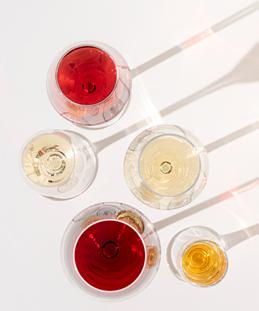

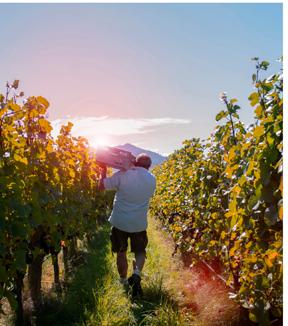
Chef: Nature according to Andrea Berton


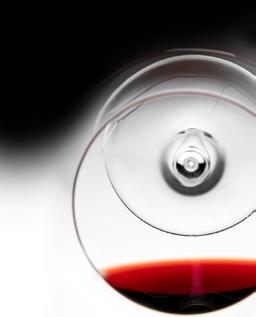

Wine is a privileged agricultural product. It is so because of the income it generates, its related industries and its cultural value. Unlike a cheese, a tomato or radicchio, it arrives at the table dressed. The bottle is not just a container, but the garment that starts the tasting. Already from looking at its shape, the colour of the label, the font used, the cork or screw cap, the pos-sible sealing wax, we begin to draw our first impression. Then comes the load from the appel-lation, the vintage and the producer. And a final and not secondary lever in the formation of expectations: the price. At this point we are already tricked, our critical objectivity is already under pressure, if not compromised. There are those who manage to deviate from this first phase, those who do not, those who do not even try. And there are many of these. The pre-conceptions we carry with us, incredibly, even when tasting blind. If a famous, cult producer is present in a battery, one will tend to look for him in the glass, if only to prove that one is still the old fox of yesteryear. If the grade is not up to scratch, the first suspicion will be on a crooked bottle - what bad luck these corks - perhaps the waning moon or a bad day. So one proceeds to a possible re-tasting. We have seen tasters slaughter their favourite wine in the dark, producers crush their top reds, oenologists get the wrong end of the stick. Only to re-turn, a few minutes later, to their old convictions. We have done it too. How difficult it is to question one’s own tastes, how complex it is to make criticisms of sacred monsters, even when faced with versions that do not live up to expectations. From memory we line up: Sas-sicaia ‘14, Valentini’s Cerasuolo ‘18, Krug ‘03, Laval’s Les Hautes Chevres ‘15, Mascarello’s Ba-rolo Monprivato ‘16, Pergole Torte ‘16, Masseto ‘09, just to name a few. In several guided presentations, the wines seem to be described for what they represent and not for what the glass tells us. Tasting, yes, but at a leisurely pace. It is as if most comments and analyses are made when the bottles are closed, untouched. In the natural world, the echo is even more powerful, even impractical taste parables are frequently justified by virtue of the label, which marks a political affiliation. Certainties are stronger than doubts, a Gaja wine can never be more interesting than a Rinaldi red. There are positions to be respected. We are all label drinkers, right down to the first kiss and the second glass of wine.
– Lorenzo Ruggeri

 by Paola Mencarelli
by Paola Mencarelli
by Paola Mencarelli
by Paola Mencarelli

 by Samantha Migani, Hawaiki, Bellaria Igea Marina , Rimini
by Samantha Migani, Hawaiki, Bellaria Igea Marina , Rimini
2,5

2 cl Appleton Estate 15 Years Black River Casks
2 cl Trois Rivières Cuvée de L’Océan
3 cl Romagnola Sangria Chutney with Tabar Bergamot Gin and Prohibito Primitivo Wine Syrup
1,5 cl Lime Juice
1,5 cl Gardenia Mix with Tiki Batter Prohibito
Technique: Throwing & Double Strain Glass: Crystal cup with Medusa stem
Twist on the Daiquiri, the iconic cocktail from which the Tiki movement originated. Indie Sam’s Special is a sensory journey from India, via the Caribbean, to the Adriatic: it was born on the seashore, where for Samantha “the salty scent and the sound of the waves come together in a tribal dance of emotions that dig into the depths of the soul and open up a heavenly vision, leaving an extreme sense of freedom . Inspired by the beauty of nature, Samantha imagines the elegance of the jellyfish transformed into a glass to contain a mix of unprecedented perfumes and flavours in Tiki style: a tribute to ‘ her ’ Emilia Romagna. In the rum blend, the herbaceous and edgy notes of the Jamaican meet the saline and savoury ones of the Martinique distillate, softened by the smoothness and a hint of woodiness of the Venezuelan. The sangria chutney imparts fruity Romagna flavours in perfect harmony with the oriental spices, and at the end the buttery note of the Tiki Batter stimulates the taste buds with complexity and succulence.
BARLADY : Samantha grew up in Bellaria Igea Marina and, after a childhood spent between the sea and her grandmother's food shop, at the age of 18 she began her career in the family bar. An experience in Milan in the fashion field fuelled her creativity, but after seven years she returned to her beloved Romagna to work behind the counter in the bar of her current partner, Alessandro Montanari. She attended Drink Factory in Bologna and, thanks to the teachings of Dalla Pola and Zottola, her love for Tiki broke out, which became a real lifestyle for her. In 2018 she opened Hawaiki, a tiki bar and exotic restaurant, in the same building that 60 years earlier housed her grandparents' grocery shop. Among the 12 professionals on Bargionale's Drink Team in 2021, she is now brand ambassador for some of the most famous mixology brands.

“Is too much wine consumption bad for you? We are ready to work with the Commission for a single claim at the European level, within the wine standard, without addressing to alarmist solutions, Nutriscore oreven worse - letting each member state, decide for itself.” Thus, on the subject of labeling and health warnings, the president of Unione italiana vini, Lamberto Frescobaldi spoke in Rome at the Campidoglio during the Stati generali del vino. “We are in favor of passing a message related to moderation,” the Uiv number one continued, “What we cannot accept is the flight forward of a European country as happened with Ireland.” Frescobaldi’s proposal immediately found the support of MEP Herbert Dorfmann (Committee on Agriculture and Rural Development): “I believe we can reflect on this issue and find compromise solutions as we have already done on calories on labels. The important thing,” he concludes, “is that it should be a community choice, not the choice of a single state. In this regard, the European Commission was wrong not to intervene in the Irish case, accepting the flight forward of a single country; in this way what will become of the single market?” Also speaking on the issue was Luca Rigotti, wine sector coordinator of Alleanza Cooperative Italiane and chairman of the Cogeca wine sector working group: “I am convinced,” he said, “that we will succeed in creating a vision of viticulture in the world as a healthy product. Ireland’s in our view is a discharge of responsibility by the legislature, which, not knowing how to deal with the problem, thinks it will ease its conscience with label alerts.” – L.S.


Olive growing in Europe is facing a crisis. Yields are falling, costs are rising. But meanwhile there are those who think that GMOs are the solution. Already at the beginning of August (and not only this year!), increasingly extreme weather conditions were predicting a disastrous olive oil campaign throughout Europe this year. Meanwhile, amidst skyrocketing prices and uncertainties about the future of Italy’s green gold, there are those who foresee a production of olives from genetically modified plants. The world production of olive oil and table olives, just to give an example on a global scale, is said to be down by 26%: a collapse in which Europe is the leader. In the EU, in fact, the drop is expected to be -39% with 1.4 million tonnes with Spain losing 56% of production. In Italy, the drop in production would be around 27% with 241 thousand tonnes. This has started to translate into a very high price increase: to give just one example, on the Bari stock exchange on 2 August, the price of Italian extra virgin jumped from 4.5 to 9 euros per kilo. In this context, an extreme question arises: can GMO olives be a solution? On this question, Gary Lewis, president of the British NEODA - National Edible Oil Distributors Association - has no doubts: ‘The market simply cannot produce enough to meet the demand... Part of the solution could be to turn to GMO solutions, which are widely used in the US. By genetically modifying crops you can make them more robust and increase yields,’ he told FoodNavigator. In Italy, the last experimentation in this sense stopped in 2012, after 30 years of studies carried out by the University of Tuscia and blocked by the Ministry of the Environment. What will happen now? How will we (if we want to) defend the more than 500 olive cultivars grown in Italy and which have made and continue to make history and flavours?
– Indra GalboAfter the latest negative data on Italian wine exports, it is now beer’s turn to reckon with a difficult year in terms of sales. Raising the alarm on the consumption of brassic products is AssoBirra, which predicts that 2023 will close with a negative sign. A drop in sales that is expected to be around 6.6 percent in the first eight months of 2023 compared to the same period in 2022. A figure that goes hand in hand with a 7.4 percent decrease in exports in the first half of 2023. Slowing down the trend of beer in our country and thus compromising the health of a supply chain that employs more than 118 thousand operators is the unfavorable market situation first and foremost, characterized by a generalized increase in prices that reduce purchasing power and therefore sales volumes, to which are added the difficulties of producers due to the consolidation of increases in production costs now structural compared to the past. One statistic above all: glass, among the most widely used and key raw materials for the brewing industry, has seen its procurement cost increase several times in 2022 (about +40%) and again in early 2023 (about +20%) due to soaring energy prices and the tripled cost of scrap glass needed for bottle production. Not to be outdone are price increases in barley malt (+44%), corn (+39%) and aluminum (+20%). These are compounded by climate change impacting the brassiculture supply chain, with rising temperatures affecting the quality and thus the availability of barley malt and hop supplies.

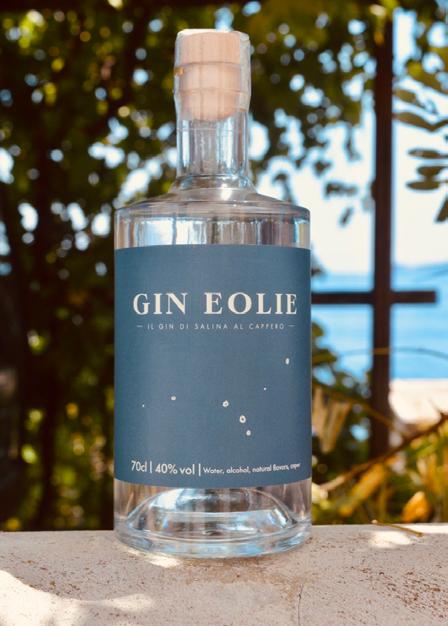


Even Salina, the greenest of the Aeolian Islands, has its own gin: it was created by the volcanic - it has to be said - Dario Cataffo, an entrepreneur from Santa Marina di Salina where he runs the famous Porto Bello restaurant, the eponymous Sea Lounge cocktail bar and a hotel. “Everything stems from a love for my island, inspiring the botany of my gin are the typical scents I smell every day in Salina,” Dario tells us, “such as the caper, the many wild herbs that grow between the sea and the hills, and as an avid underwater fisherman, knowing the purity of the waters surrounding the icon in my gin there is a small percentage of sea water. The result is a distilled gin with a captivating aroma reminiscent of rock salt, spicy spices and herbs, truly reminiscent of the unique scents of the Aeolian islands. And which adds to the already overblown plethora of liqueurs that eventually decry the demise of Gin as a great classic in the history of mixology and custom.
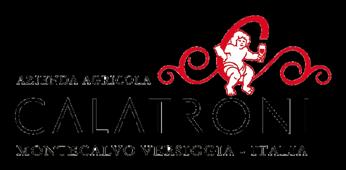
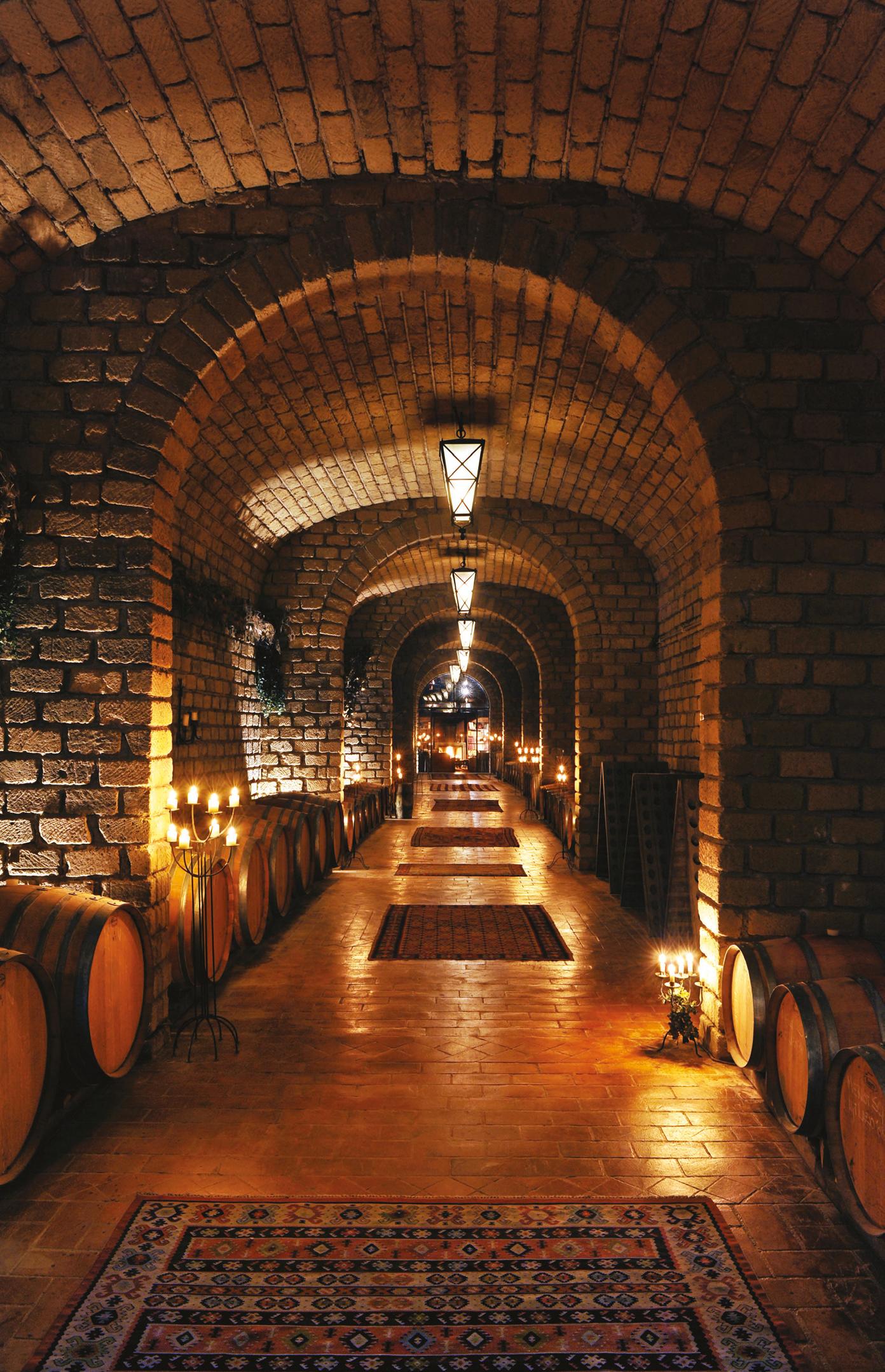


Several new features characterize the 2023 edition of Barolo en primeur, the solidarity auction promoted by Fondazione cassa di risparmio di Cuneo and Fondazione Crc donare Ets The first is that the exclusive tasting, on October 20, will involve 25 wineries in the Langhe to taste directly from the barrel, in preview, the 2022 vintage of Barolo and Barbaresco, which will be auctioned in the solidarity auction on October 27 at Grinzane Cavour Castle. The second novelty is that, during the charity auction, there will be not only New York connected but also London: collectors and philanthropists will compete in live streaming for Barolo lots directly from the London rooms of Christie’s auction house. There are 1,336 different sizes donated by producers (for more than 1,300 liters) and, along with 12 barrels of Barolo Vigna Gustava in support of social projects, they will be enriched by the artist label of painter Otobong Nkanga. Planned, as usual, is live coverage with Hong Kong during the World White Truffle Auction in November. In its first two editions, Barolo en primeur raised nearly 1.5 million euros for 37 charitable projects and initiatives. “The great success of last year’s edition, thanks to which we raised important funds for the Wine School, dedicated to training and research, are the first step of a path that we intend to strongly support in the coming years as well,” said Matteo Ascheri, president of the Barolo Barbaresco Alba Langhe and Dogliani Consortium, which is collaborating on the initiative.

 by Michela Becchi
by Michela Becchi
Producing milk-like drinks without exploiting animals: this is what Bored Cow does using milk proteins obtained not from cows, but from the fermentation of vegetables and from which it makes drinks packaged in colourful and original cartons. On each one, the design of a cow with a different look depending on the flavour: there is the astronaut cow for the vanilla drink, the guitarist for the strawberry variant, the skater cow for the chocolate flavour and the cow in the home version with sweater and socks for the original recipe. A mascot that changes outfits and accessories, with different backgrounds and accompanying vignettes.

The Zorzettig family’s adventure in the world of wine began more than 100 years ago and has as its backdrop the splendid hills of Spessa di Cividale, in the heart of the Colli Orientali del Friuli, where the vineyards, protected by the Alps and kissed by breezes from the Adriatic Sea, benefit from a unique terroir and microclimate, ideal for viticulture. Dedication, tenacity and passion are the values that have forged the character of the founding family, which, despite the upheavals that have put this corner of Italy to the test, has known how to start afresh each time and how to bring new ideas and further developments with each generation. This historic wine cellar thus boasts a long family history studded with successes and winning ideas, such as that of Cavalier Giuseppe Zorzettig, Annalisa’s father, who decided to invest in native vines, working on their drinkability, to succeed in promoting the territory at a time when the prevailing trend was to favour international scenarios. The result is, today, a modern and sustainable winery, which builds on tradition to support technological development. “The approach to modernity, through the use of technology in a shrewd
manner, combined with traditional values and common sense, are the winning ingredients for conveying a quality product,” explains Annalisa Zorzettig, who has been at the helm of the company for over 20 years. “If it is indeed true that technology favours processes, it is also true that the adoption of good practices stem-

A cutting-edge winery is a winery that is attentive to changes in consumer preferences. The quality of the products must go hand in hand with an involvement that can take place through different channels: from the history of a territory to that of the winery itself; from the technical description of the products tasted to the discovery of the different production phases.
The new Zorzettig winery also has this ambitious objective: to bring its guests closer not only to its products, but also to the territory, nature and culture that define the character and personality of those who think and produce those wines.

ming from tradition act as differentiating elements for what is then the final result. It is in fact the details that make the difference,” concludes Annalisa, who has proudly followed in her father’s footsteps and achieved, thanks to vision, perseverance and commitment, important results also in the international sphere, with exports constituting 60% of sales and touching 46 countries worldwide.
Today, the Zorzettig winery has more than 115 hectares of vineyards spread over the hills of Spessa, Ipplis and Prepotto and a production of 900,000 bottles per year. At the dawn of the 150th anniversary of its foundation, the company is also ready to inaugurate a new phase in its history that begins with the renovation of the cellar: an evolution of the company’s identity that makes the past the foundation of its future.

A wine as frank, savoury, clean, fresh and sincere as the power of nature. The purity and vitality of Leonie are the future and the future is sustainable. Characterising the label, a protected cherry blossom on the inside of the goblet represents the Zorzettig winery’s ongoing commitment to protecting the land, with a focus on biodiversity. The Friuli Colli Orientali is a blend of Pinot Bianco, Friulano and Sauvignon grapes from the Vigneti di Spessa cru where they are grown in the double upside-down style. Harvesting is done strictly by hand with careful selection of the best bunches and, following soft crushing, a 12-hour cold maceration is initiated. Fermentation in steel tanks, separate for each variety, is followed by ageing with weekly batonnage for six months in steel. After blending of the three wines and ageing in small wooden barrels for a further six months, bottling takes place.


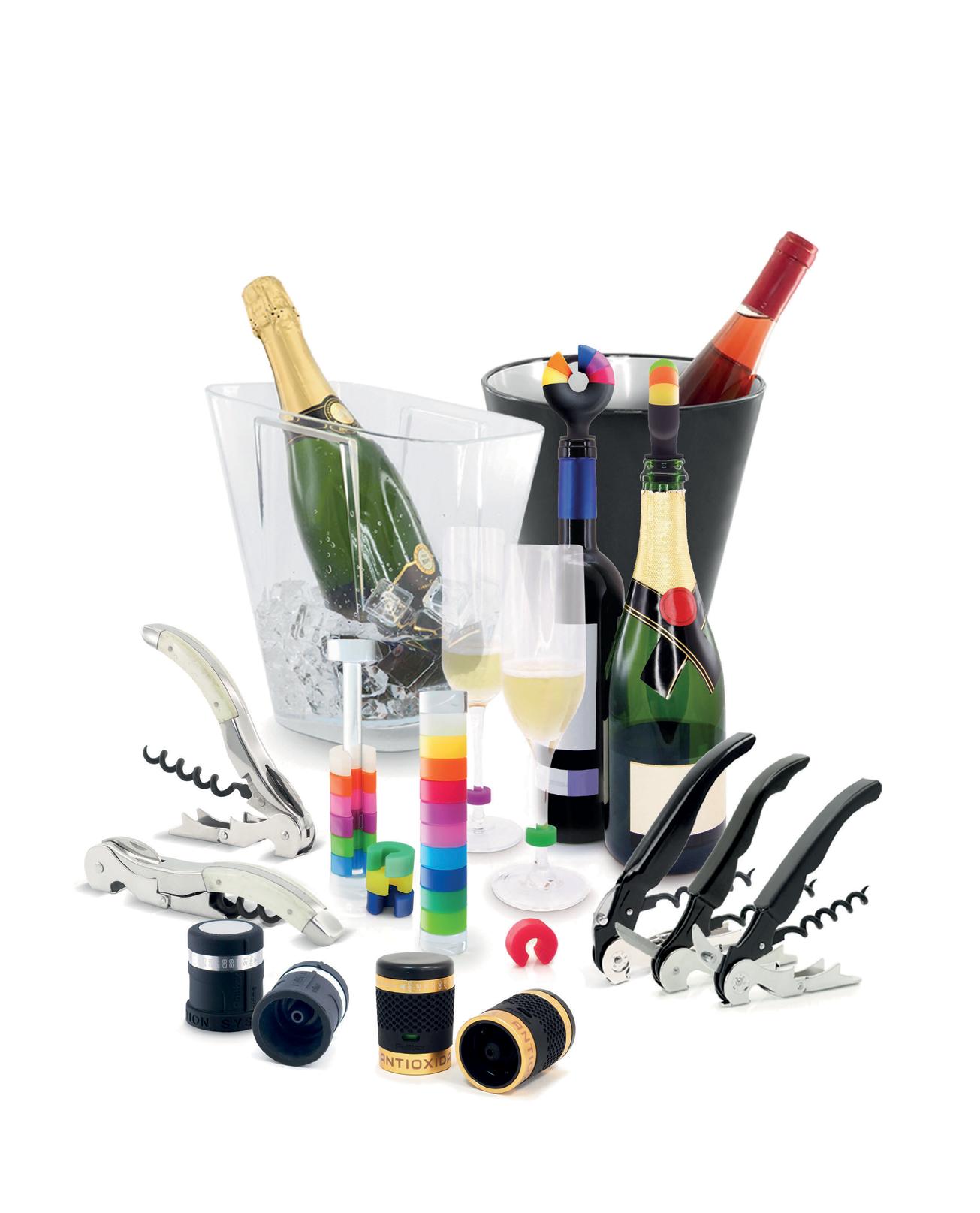
Bianco, Rosso, Bollicine, Rosato, da Meditazione: these are the labels that left us speechless after 50,000 tastings for Vini d'Italia 2024. We tell you about them After the tastings, we highlight some of the 'messages enclosed in glass' that identify our vision of Italian wine: are the 5 wines of the year ear
 by Lorenzo Ruggeri photos by Alessandro Micarelli
by Lorenzo Ruggeri photos by Alessandro Micarelli
The first edition of our Guide was christened in Florence. It was the autumn of 1987, the 1988 edition, the one with the bottle-green cover, the strange oversized format and the graphics that were revolutionary for the time. Looking at it again, one theme stands out: most of the wineries that make the national scene so vital today were not there. They simply had not been founded yet. Date in hand, the world of Italian wine is anything but an Old World, much to the chagrin of the narratives that skilfully mix vines of Greek origin with Roman customs. This portentous growth has been going on for the last
30 years and we have been delighted to have it recounted at close quarters at the rate of our Tre Bicchieri, in Italy and with equal intensity around the world. Today on the global chessboard, we have earned the label of the 'Jurassic Park' of viticulture, a definition we find in the textbooks of Wset, the international institute that organises the preparatory courses to become a Master of Wine. Certainly, we have in Italy a 'chaos' of grape varieties, territories and styles that is, however, increasingly loved and sought after by curious and demanding wine enthusiasts. In order to venture knowledgeably into this complicated and fascinating kaleidoscope, we have
over the years put together a team of more than 70 competent tasters, 70 authentic aficionados of Italian wine, who for months tour the Peninsula and blind-taste at consortia and institutions an impressive number of samples, almost 50,000 this year (there were 1,400 in 1988). It is a crazy and exhausting job that requires a tried and tested organisational machine with tight deadlines. Within the team there are a plurality of voices and sensitivities - every year the final tastings are also attended by international personalities for an all-round confrontation - who put themselves at the service of the consumer and the trade.

As many as 2,300 samples made it to the finals for Vini d'Italia 2024: a spectacular match that ultimately decreed the 498 wines awarded Tre Bicchieri. A result that, when analysed, tells how the geography of Italian wine continues to reshape itself, disrupting the hierarchies; how that geography is completely revolutionised when compared to the first edition where no producer from Valle d'Aosta, Emilia Romagna, Marche, Umbria, Molise, Campania, Puglia, Basilicata, Calabria Sardegna reached the podium. For an accurate and light-hearted report, we invite you to read our football-style 'report card' of the regions, which you will find on page XXX: you will discover that rock music is playing among the rows in Calabria or that it is the Sangiovese d'autore that is leading the redemption of the areas most affected by the bad weather in Romagna. Producers are faced with multiple challenges amid climate change, vineyard diseases, a slowdown in exports, inflation and a new punctilious labelling system that should come into force at the end of the year.
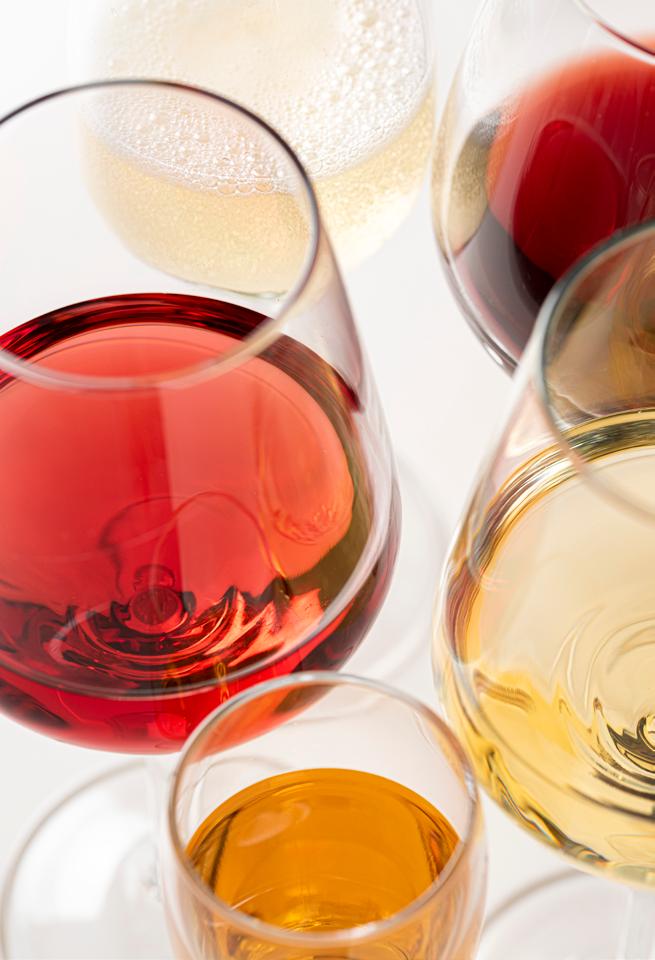
For our part, our philosophy in our judgments has never changed: we value both large cooperative wineries and artisans with confidential circulations; we do not like wine parties and alignments: our layman's approach takes us among world-famous oenologists as well as among realities that make us suffer because they do not even have a remotely up-to-date website. By the way, we are seriously questioning the digital future of such an articulate work and during the year we will be landing on our gamberorosso.it website in a streamlined and user-friendly manner, with in-depth articles and focuses for our readers; we would like
to mention the Vini Rari project and a newsletter entirely dedicated to the world of sparkling wines that is about to be launched.
Returning to the printed edition of the 2024 guide, the graphics and format have been updated, slightly larger, in order to increase readability; while the foreign language editions, the project's true flagship, have been confirmed: German, English, Chinese and Japanese. They are the driving force behind a very full calendar of international events, almost 40, to accompany the wineries with the world of the trade; among the guided tastings, we will also be bringing in the special awards, which sum up our philosophy in a kiss.
With the tastings closed, we decide to highlight some 'messages encased in glass', preparing a tasting list that aims to identify our vision of Italian wine: these are the five wines to which we award the Special Prize for the best performance in their category: sparkling, red, white, rosé and meditation.
This award, which every year makes us debate for days on end, takes us to Erbusco - one of Franciacorta's most prized vocational units - and plastically represents a fair number of topical issues. In the meantime, it is a Dosaggio
Zero, a trend that we find increasingly strong both in the bubbles from beyond the Alps and in our great Metodo Classico territories. This is a Millesimo 2016, a vintage that also continues to write important pages on the side of bubbles in terms of freshness and vibrant character, a characteristic that we find exalted in a register of extraordinary cleanliness and aromatic definition, we find technical mastery but also gustatory complexity. In short, we offer a great example of Franciacorta, contemporary in style and proposed, among other things, at a more than reasonable price by the Gatti family that produces it. With these prerequisites we can play it with a straight face even in the Champions League.
For White of the Year, we once again emphasise the extraordinary vocation of Collio, cradle of world-class whites. Hillside viticulture - the name itself says it all - and borderline viticulture, home to some of the country's most inspired, stubborn and talented winemakers. The choice fell on a Chardonnay, which many would not take as such blindly, simply because the terroir expresses itself with disruptive force: the olala went off as we tasted it blindly, sketching a gustatory parabola so compelling that it
requires a built-in GPS. The savoury grit of Oslavia and a sartorial use of different woods for fermentation and maturation, as well as long ageing in steel, remind us softly that Charonnay is one of the world's greatest grape varieties, interpreted in this case by Marko and Boris Primosic. Many Italian whites age better than many emblazoned reds, which will also be the case with this 2018 Reserve.
With the Rosé of the Year, we reaffirm a specific identity, far from that Provence effect that seems to afflict the entire category with increasingly drab colours even in the presence of anthocyanin-rich vines and arid climates. We have chosen a rose wine that chooses a third way: it does not just play the fruit and acidic pleasantness card, but manages to unfurl a rich array of nuances and registers with grace and class. Its dual soul reflects the origin of the Montepulciano vineyards: two are on the slopes of the Maiella, at altitude, the other a stone's throw from the Adriatic at Silvi Marina. The grapes ferment and mature in exhausted barriques, and then pass into steel. The talent of a great craftsman like Giuliano Pettinella
makes all the difference: this is the first time of the Tre Bicchieri and the highest recognition for a Cerasuolo d'Abruzzo that does not fear the weather and highlights the excellent interpretation of a hot and dry year like 2022. A pearl that reinforces the identity of Italian-style rose wine.
The Red of the Year puts an exclamation mark on the 'vineyard of vineyards', a one-hectare plot planted in 1947 in Serralunga d'Alba. There must be a reason why Vignarionda's prices are rising faster than Apple's shares: in the glass we have a gesture of pure and authentic beauty. For us, it is a tribute to Italian wine, created by an extraordinary producer (the Giovanni Rosso winery led by his son Davide) and a vintage, 2019, which we rated 5-star for Barolo. The wine is already in great shape, and will be in great shape 40 years from now.
Finally, with the Meditation Wine of the Year, we would like to shine a spotlight on an increasingly rare nectar that takes us back to the nautical routes between Sicily and England, that Marsala which today struggles to carve out a commercial space for itself but which continues to fascinate us in a poignant way. While some virtuous Sicilian winemakers have recently brought back the pre-British style, i.e. without fortification with alcohol, we opted for a 2011 Marsala Vergine Riserva, from only Grillo grapes that mature for 10 years in barrel. In this Florio label, we find ourselves: with its spicy and iodine character, eclectic and surprisingly drinkable, despite its dense and viscous concentration. With the proper attention to service and temperature, it can inspire some of the most surprising pairings. We indulged ourselves, while rereading the drafts of the guide, between a slice of salami and a slice of pizza.

The votes for the wines are in, assigned by the editors of Vini d'Italia, Giuseppe Carrus, Gianni Fabrizio and Marco Sabellico and by deputy editors William Pregentelli and Lorenzo Ruggeri

Since 1986, the Gatti family has been enhancing the grapes of Franciacorta, mainly from the Erbusco area, for the production of cuvées that are highly appreciated by Metodo Classico lovers. Lorenzo and Paola Gatti, together with Paola's husband Enzo Balzarini, look after over 20 hectares managed with low environmental impact organic farming. The house style is characterised by a distinct aromatic fragrance, cleanliness and drinkability. We were bewitched by the Franciacorta Nature '16 (chardonnay with a balance of pinot noir), the fruit of a great vintage for the Lombardy district. It opens on fine and very fresh aromas of citrus peel and white peach; the mouth gives a jolt of flavour, the development is vertical thanks to a crisp acidity, the slightly smoky and toasted hints of flint enrich the aromatic picture. The finish is pure, multifaceted and very long.


Marko and Boris Primosic run the company founded in 1956 by their father Silvestro. The Oslavia area is home to a considerable number of family-run wineries, which have written and continue to write the history of Collio. It is well known how widespread in these parts is the use of ancestral techniques in winemaking, deriving from ancient cross-border traditions, which call for long macerations on the skins even for whites and, above all, for Ribolla Gialla. For us, the real standout is the Chardonnay Riserva '18: it has a ripe and spicy touch on the nose that is nothing short of fascinating, between dried fruit and soft toasting, while on the palate it displays a portentous depth of flavour. It has flavour, savoury texture and an interminable persistence. Our White of the Year goes well with white meats and spicy dishes. And it is a candidate for easy uncorking in 10-15 years..
Giuliano Pettinella, originally from Le Marche, was a lawyer before deciding to change his life completely, leave the bar and return to Abruzzo, where his family had its roots. So he identified a small vineyard in Tocco di Casauria, at an altitude of around 350 metres, on the slopes of Monte Morrone, to which he added a small plot overlooking the sea, in Silvi, in the province of Teramo. In both, the only grape cultivated is Montepulciano, which is transformed into two labels to be researched carefully, despite the confidential numbers. This year Giuliano really delighted us with an exciting version of Tauma, his Cerasuolo d'Abruzzo. Beautiful craftsmanship in the olfactory profile, genuine and identity-driven, reminding us that we are dealing with Montepulciano: graphite, pepper, red cherry, currant, an almost toasted hint and then a dynamic and rhythmic mouthfeel, juicy, fragrant, very drinkable yet nuanced and complex. What more could be desired from the Rosé of the Year? Chapeau..

Giovanni Rosso
More than a century of history for the Giovanni Rosso winery in Serralunga d'Alba, which has been run by his son Davide for the past 20 years and counts vineyards in some of the most famous Barolo cru, such as Cerretta, Serra and especially Vigna Rionda. The main objective is to produce wines that tell the story of their place of origin without filters, seeking maximum expressiveness through aromatic clarity, structure and an elegant tannic texture. Vinification follows the traditional style, favouring indigenous yeasts and making use of large French oak barrels for long maturation. The Barolo Vignarionda Ester Canale Rosso '19 has everyone in agreement. The aromas are symphonic and very fine, from rose to liquorice, boosted by balsamic essences and floral backgrounds. The palate is disarming in its progression and depth. It has a pressing rhythm, without raising its voice, telling a world of fruits and spices, drawn by a masterful tannic texture and a savoury fabric. For us, it is this year's Red of the Year. And it has at least 30 years of pure glory ahead of it.
Duca di Salaparuta, Corvo and Florio are the brands that represent the noblest part of the history of Sicilian wine: since 2001 they have been part of the ILLVA group, which has relaunched the two historic companies in Casteldaccia and Marsala, forming a winning synergy capable of representing the excellence of Sicilian wine production, thanks also to the acquisition of new estates in highly vocational areas: Risignolo in the Trapani countryside, Vajasindi on Etna and Suormarchesa in Riesi. The Marsala Vergine Riserva '11 is sumptuous: a complex bouquet of Mediterranean scrub, dried citrus peel, spices and marine nuances that return in a beautifully harmonious, savoury, vibrant and very long palate. To be sipped calmly novel in hand or next to a friend with a talent for storytelling.

Vineyards by the sea cooled by breezes under a warm sun, a remarkable complexity of soils that have in common a sandy texture of marine origin, organised in flat or gently sloping terrain. This is the territory protected by the Brindisi DOC, over which the Consortium led by Angelo Maci watches over. The territory of the modern denomination, which was established in 1980, embraces the two municipalities of Brindisi and Mesagne. There are almost 400 hectares of vineyards, many still cultivated with the alberello system close to the Adriatic Sea, along that stretch of Apulia that runs from the Torre Guaceto Nature Reserve to the south of Brindisi, on soils of calcareous origin with a sandy component that allows the vines to grow luxuriantly. Or on the deep, clayey, iron-rich soils found inland towards Mesagne. This is the ideal habitat of the area’s main grape variety, the negroamaro: a grape also common to many other Salento DOCs, but here the sand and proximity to the sea - with the tramontana wind that sweeps in at the narrowest point of the Otranto Channel and intensifies its pressure, creating a cooler, less humid microclimateis made even more elegant, giving the wines of this denomination a particular finesse.
“In recent years, through the commitment and foresight of wineries, producers and oenologists,” Angelo Maci explains, “the wine produced in the area has managed to highlight all its characteristics and
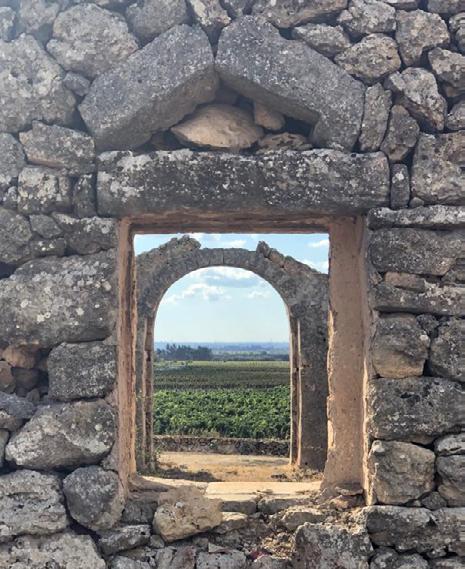
potential. This is thanks to the close link between the city, the countryside and the sea, which makes our wines full-bodied, savoury and fresh, and also to the sea breezes and the soils of limestone, marine sands and clays’. But Brindisi’s relationship with wine goes back long before the creation of the DOC: this is testified to by the discovery of Roman wine amphorae all over the Mediterranean and even on the shores of the Black Sea, wine amphorae that departed (or arrived) right from the city’s port. Ancient Brundisium was in fact the terminal of the ancient Via Appia, the consular road that joined it to Rome. From the port of Brindisi, ships departed for the opposite shore of the Adriatic; and from Brindisi departed the Grand Tour that took young Romans to discover the richness of Greek culture.
The production specifications are rather articulated: alongside Rosso (which can also be Riserva) and Rosato (which can also be spumante), it also provides for Bianco, which is mainly based on Chardonnay and Malvasia Bianca (in addition to Sauvignon and Fiano), all also in spumante version characterised by the fact that the grape variety that defines its name must make up at least 90% of the base. Brindisi Rosso, the most traditional blend, calls for a minimum of 70% Negroamaro and a balance traditionally entrusted to Malvasia Nera; other authorised vines may also contribute, such as Sangiovese and Montepulciano, Ottavianello and - last but not least! - susumaniello. Historically present in the area, the latter variety is now at the centre of a real rediscovery, to the point that the number of hectares has multiplied in recent years, and it is gaining increasing weight in the blend, while the specification also provides for a Brindisi Rosato Susumaniello and a Brindisi Rosso Susumaniello in which this grape is present at least 85%.

Consorzio di Tutela dei Vini Dop Brindisi c/o CCIAA – Brindisi – via Bastioni Carlo V 0831652749 – vinibrindisisquinzanodoc.it



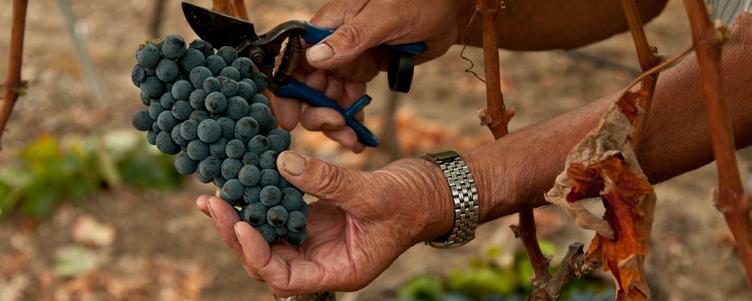



Era It was 312 B.C. when the censor Appius Claudius the Blind had the ‘Regina Viarum’, the Appian Way, built, which initially connected Rome to ancient Capua, but was later extended over the years until it reached Brindisi, which from then on (around 190 B.C.) became the central port of the Adriatic. Along the Via Appia, in addition to goods and armies, travelled the Greek culture that changed the Roman world so much. The Roman roads have always represented a kind of social aggregator, the vascular system of the Empire; on the edges of the Appian Way, for example, communities were created that began to cultivate, especially with vines, the territories bordering the long route from Rome to Brindisi: thus wine-growing developed in these areas. Last January, the Ministry of Culture signed a memorandum of understanding for the nomination of the Via Appia for inclusion on the UNESCO World Heritage List, precisely because it represents a concrete symbol of the millenary relations between Italic and Mediterranean peoples. The process is unfolding with the support of four regions (Lazio, Campania, Basilicata and Apulia), 12 provinces and metropolitan cities, 73 municipalities, 15 parks, the Pontifical Commission for Sacred Archaeology and 25 Italian and foreign universities. Of course, the Consorzio di Tutela Vini Brindisi is also at the forefront of this project.

We interviewed the Harvest. It told us virtually everything there is to know about the wines of 2024
 by Lorenzo Ruggeri - artworks by Andrea Boatta
by Lorenzo Ruggeri - artworks by Andrea Boatta
Peronospera, hail, record high temperatures. But how much did this year intend to make these poor vine growers suffer?
They also had to put up with one of the ugliest summer hits of recent vintages.
The disco paradise?
Fortunately, no one has understood what it is. Perhaps this is a good thing.
I find you to be in great shape. Let's clarify, was it really that bad? Low yields, but no worries: quality is safe.
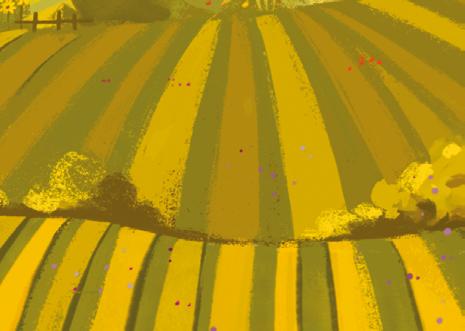
Sure, and Italy beats France. By the way, this year our French cousins overtook us on the right. Let's talk about volumes.
With 6 billion bottles in the cellar, a little less product will be healthy. There will be more focus on positioning and proper product valorisation. The average Italian export price is 3.6 euros per litre, the French are travelling at 8.8 euros per litre. You don't have to be a master of wine to understand that there is not such a clear gap in the glass. The road is uphill and you Italian communicators are part of the problem.
Yet in Italy the premiumisation effect in recent years has been important, to some it even seemed excessive.
All over the world, wine is considered a luxury good, a status symbol. Here, many still regard it as an everyday foodstuff. We are only at the beginning of a journey, prices will rise further, wineries will be less family and more company. Investment funds will replace fathers who leave no room for sons; the poetry of everyday life will be replaced by management control. The winemaker is neither a saint nor an artist but an economic actor.
A textbook harvest. Setting aside the purse strings, let us take a snapshot of the Italian vineyard in the days of peronospera. The harvest began on the 3rd August, and as usual it was Sicily that opened the dances, closely followed by Franciacorta and some districts of Puglia and Tuscany. We will close the doors in November between Vulture, Alta Irpinia and Valtellina. In May, the problems mainly hit the centre-south, suffice it to say that the north alone is expected to produce around 65% of all national wine this year. In the north the rain did not cause so many problems because it is part of the lifestyle

and farmers are more used to dealing with it.
Italy split in two in the grip of peronospera. It sounds like the opening title of Studio Aperto.
Abruzzo, Marche, Puglia, and Sicily have suffered so much with drops of up to –60%, but Lazio and Tuscany are not doing so well either. The brightening comes if we move north, from Emilia to Lombardy, but Piedmont and Veneto also have average production and less pervasive diseases. On a national step we are close to a -15% compared to 2022, around 43 million hectolitres.
Do we have to go back that far to find such poorly productive vintages?
Not too far, we are on the level of the scorching 2017, 2007 or 1948. When cyclist Bartali won the Tour among the pissed-off French.
On paper, could this be an excellent Metodo Classico vintage?
True, the sparkling bases are very promising: beautiful pinot noir grapes in Oltrepò Pavese, which always seems to turn around; but also in Franciacor-
ta and Trentino the situation is far from worrying. The acidity is above average, there is freshness to spare. Allow me, however, a note. Please do.
You journalists must have a crystal ball. The harvest is not yet over and you already know everything: life, death and miracles of the wines of the future. It's a bit like commenting on a dish that has not yet been prepared.

OK, but have we ever seen such distressed vineyards in the last 20 years?
Well, you has a point. Yellow leaves were part of the Italian landscape this year.
Tell me something. It is getting warmer, natural acidities are lower and pHs are higher. Yet the wines in the bottle are getting lighter, leaner and more agile. How is this possible? Shouldn't it be the other way around?
Wine follows our tastes and thoughts, what we read, what we see, the dishes we eat. There is nothing more human than wine. Wine changes according to people. Anyone who says otherwise is lying.
You is not a convinced naturalist.
I am not angry with natural wines, but rather with the attitude of superiority typical of those who produce or sell them. That haughtiness that Americans have when they export democracy to countries they don't know or that people show when they think they can change the world by sipping organic kombucha.
By the way, organic has suffered particularly this year. The peronospera has a secular approach, it looks no one in the face:
In writing this interview, we were shamelessly inspired by journalist Gianni Mura, who passed away in 2020, and his famous soccer championship interviews.
conventional, organic, biodynamic, Taliban, infamous or glorious vineyards. Certainly to protect the vineyard, someone has used a pinch more copper. And to put it bluntly, organic still allows products such as pyrethrum, an insecticide that has the effect of napalm.
Speaking of trends, it is fashionable to age wine in the cool of the ocean depths, what do you think?
I love the saltiness stuck to the bottom of the bottles, the fossils found after millennia on the necks, the rhythmic, undulating movement of the waves to let the wine breathe. Evidently there are people who really enjoy storytelling. I've tasted a little bit myself, to the eye it doesn't change a damn thing. But I am not a technician.
Names out: three producers not too well known that we should keep our eyes on?
Calatroni in Oltrepò Pavese, Amorotti in Abruzzo and Sa Carrusso in Sardinia. The first is an up-and-comer in Metodo Classico, the second is Valentini's opposite number, and blindly one takes a lot of blunders. The third is totally unknown. I made it up.
Primitivo di Manduria is born in an area between land and sea, marked by dry-stone walls built and maintained with painstaking patience to delimit thousands of plots of land tended with passion and centuries of patience: ex-panses of vineyards, mostly bush-trained, both in the most modern forms, i.e. ordered and sequential, and in the oldest forms, untidy and irregular; vineyards that reach the sea and alternate with olive groves, farms, palaces and churches.
This is the birthplace of Primitivo di Manduria. The name is due to the fact that the grapes ripen prematurely and are harvested as early as the end of August: grapes that are

born and thrive in a geographical area with a well-defined cultural and folkloristic imprint that runs south-east from Taranto. There are 18 municipalities in the pro-vinces of Taranto and Brindisi that produce the great PDO that can currently count on 5,000 hectares under vine, an area that at times has red soils due to the presence of ferrous skeleton, with limestone emergencies linked to the subsoil, and which become looser, practically sandy in the districts closest to the sea. The wine obtained from it has an intense red colour, is warm, sumptuous and enveloping, with a fruity bouquet of plums and cherries in spirit, blueberry jam, to which are
added dried flowers, spicy notes and unmistakable scents of Mediterranean scrub. In the mouth it is rich and deep, with enveloping fruity aromas, good tannic tex-ture and balanced freshness. The final persistence is surprising for a wine of this structure. But Primitivo di Mandu-ria also carries within itself the flavours of the waves of the Ionian Sea as well as the special characteristics given by the typical ironrich red soil. And it is a good thing that the low saplings are born near the sea: the sea breeze adds flavour, nuance and charm to what would otherwise be an overly full and structured wine.
Primitivo di Manduria is a wine that
ages with style and grace, refining the edges and integrating the extract, the fruit evolves and the profile becomes ethereal, with the iodine and Mediterranean scrub notes that give it depth and elegance. The soil where it is born is red due to the presence of ferrous skeleton, with limestone emergences linked to the subsoil, and becomes looser, practically sandy in the districts closest to the sea. Here the Primitivo vi-ne grows in the form of the alberello, the oldest and lowest-yielding vine training system. Traditionally, this vine is bred so that it grows on three arms with a height of no more than one and a half metres. This is


an area where, thanks to the exceptional soil and climate conditions (very little rainfall, dry and windy climate), very few synthetic treatments are required, in addition to the fact that the plant tolerates poor soils and water shortages, thus adap-ting to the Salento climate. So much so that, as a popular proverb says, ‘at San Giovanni one closes the vineyard and goes to the sea’, meaning that from the end of June to the end of August there is nothing more to do in the vineyard: the sun takes care of ripening the grapes and the plant defends itself from adversity. And this strength of the vine is transferred to the grapes and the grapes, in turn, transfer it to the wine.

With the birth of the DOC in 1974, Primitivo di Manduria began its life as a denomination and a great red wine on the Italian wine scene. The Consorzio di Tutela del Primitivo di Manduria (Consortium for the Protection of Primitivo di Manduria), on the other hand, was founded in 1998 with the initial union of ten cooperative and private wineries and received legislative recognition in 2002. At present, the Consortium, with a team of 67 wineries, almost 1,900 vine-growers and an extension of about 5,000 hectares, binds and enhances the PDO and its entire territory, as well as protecting this great protected designation of origin that has been growing in popularity among connoisseurs and is increasingly widespread worldwide for some years now. The area covers 18 municipalities between the provinces of Taranto and Brindisi and its production is divided into Primitivo di Manduria DOC, Primitivo di Manduria DOC Riserva and Primitivo di Manduria DOCG Dolce Naturale. The continuous commitment of the Consorzio di Tutela and of all the actors of the production chain contribute to the continuous and constant growth of the perception of Primitivo di Manduria and its affirmation on the market.




We recognise the importance of providing our members with the skills and knowledge they need to fully appreciate the world of wine and to contribute to its development and its territory”. Novella Pastorelli, president of the Consorzio di Tutela del Primitivo di Manduria, is deeply convinced that investment in member training - one of the latest projects promoted by the Consorzio Primitivo di Manduria - is strategically central. And this is why it has pushed to activate and finance seven courses with three field activities aimed directly at local companies. The training offer covers a wide range of topics: it is designed to meet different needs on various fronts, including first and foremost agronomic management, plant protection and Agriculture 4.0. Courses on labelling and the wine-making process will also start soon. “These are all topics that aim to provide our associates with the necessary tools and the right skills to support the excellence of the PDO while respecting tradition and the land,” Pastorelli explains. ‘The other point we are working on is wine tourism, which in a region like Apulia cannot really be underestimated. It is in this direction that the Consortium’s decision to create Primitivo di Manduria Wine Experience goes. It is a wine tourism project that aims to offer new experiences to wine lovers and to increase the involvement and interaction between wineries and accommodation facilities in one of the unique territories such as Primitivo di Manduria. “In recent years, in our territory, alongside top quality wine production, a

strategic form of tourism has made its way to the development of our wine-growing industry,” says the President. “Sector research clearly shows that a good percentage of tourists are directed to the winery thanks to the neighbouring accommodation facilities such as hotels, restaurants and local promotion bodies, which can prove to be the best allies in linking wine and tourism. We are convinced that there are great opportunities in territorial co-marketing and this is why we have conceived and designed Primitivo di Manduria Wine Experience. The facilities will provide tourists with information material on the wine tourism proposal and the list of participating wineries in electronic format; the wineries, in turn, will provide hospitality, guided tours and the sale of Primitivo di Manduria at a special price. Objective: to deseasonalise wine tourism through the promotion and valorisation of the Primitivo di Manduria production area in order to create a strategic asset that increases not only its visibility and prestige but above all the opportunity for the area to become a ‘wine destination”. “Our wineries have a very high potential to express and the territory of our PDO is a place with an immense wine-growing, natural, historical and cultural heritage,’ says Pastorelli. ‘This is why we need to work more in synergy because wine tourism is a fundamental driver for the growth of our sector. We must generate mutual benefit between operators who insist, along different lines, on the same territory”.


VINI D'ITALIA 2024: here are the performances of the territories as seen by those who tasted 50,000 labels to produce the new edition of the Gambero wine guide
Less brilliant than usual was the performance of the oriundo ace Pecorino: he prefers to play when the temperatures are cooler and in the heat he cannot guarantee his usual continuity. Nevertheless, he often joins in Abruzzo's attacking action, finalised never so much as this year by the performance of the team's flag-bearer, Trebbiano, the classic player who may be a little older but who, when he enters the field, lights up the evening. Montepulciano and Cerasuolo are the different twins that get the action going: the former at times solid and rustic, at times elegant; the latter more agile, agile and imaginative.
.5 God-kissed land that is the Atesina, where countless grape varieties find their place and conditions to give great re-
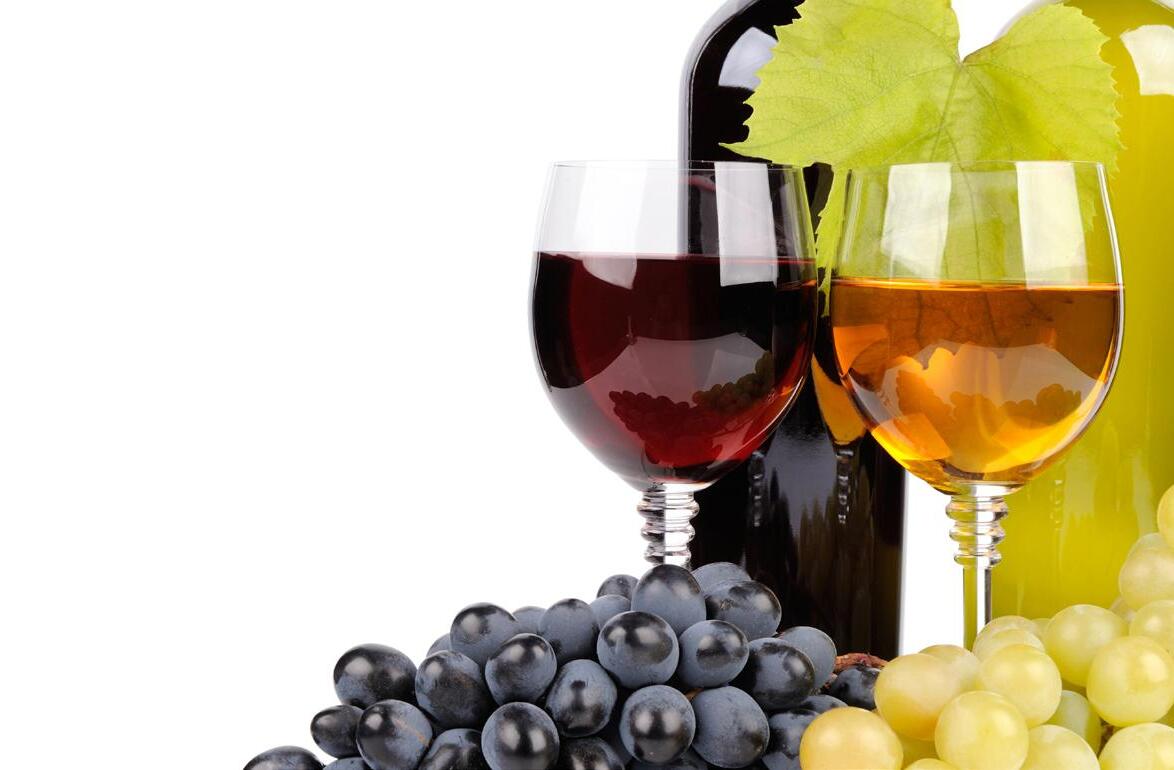
sults. Overall, the rating can only be very positive, the wines offer an average quality that is enviable to say the least. If you want to raise the bar, you could ask for more personality from the simpler wines, which often hide behind impeccable technique and could perhaps tell a little more, so that in the end the price is not the discriminating factor in market choices.
he black and white photograph of the region seems to have been taken a few years ago. In a dynamic and adventurous wine Italy, the region remains tied to its alltime flagship, Aglianico del Vulture. And even here, due to lack of investment, promotion and turnover, the leading companies are always the same. And this ultimately takes oxygen away from one of the possible stars of southern oenology, among the most beautiful and least known regions of the Boot. There is life
beyond Aglianico, as evidenced by the tastings of the Matera and Grottino di Roccanova DOC wines. But there is still a long way to go.
The last two years' harvests have been rockin' for Calabria. The former Cinderella of southern Italy has shifted into high gear and is quickly rising from the last position where it had been relegated for years. The credit for this goes to a new generation of winemakers who are very environmentally aware, but also technically very knowledgeable. There are many surprises, both in the reds and the whites, especially from Greco, thanks to the vine's natural ability to withstand the heat. Finally, Calabria is the only region that continues to produce sweet or meditation wines; the numbers, albeit small, of this type are constantly increasing.
In spite of Taurasi's own goal (although it did manage to score a couple of not bad zampas in the end), Campania was in great form in our tasting sessions. This is thanks to the creativity and imagination of the Campi Flegrei and Cilento, which play behind a spearhead capable of finishing even when the vintages go sideways: we are talking about Irpinia's white wines, where Fiano and Greco shine and are practically a match for themselves. Quantity and quality for the Sannio, with the usual falanghina to marshal the midfield.
This is an excellent performance by a region that, compared to a few vintages ago, has seen a notable increase, both on the Emilian side (with the Lambrusco world acting as a locomotive) and on the Romagna side, with Sangiovese becoming increasingly territorial and authentic. At this point, why not go all the way? The smaller areas should be more convincing (first and foremost Piacenza and Bologna), while the age-old issue with the magnum sea of Lambrusco Emilia IGT, where quality leaves something to be desired, should be resolved. Doubts also come from several (too many) Sangiovese di Romagna wines that come from vineyards in the lowlands.
Once again this year, Lazio has moved in scattered order, relying more on the individual class of the various producers, and there are several who have it to spare, than on the ability to propose a collective action, in which denominations of origin and protection consortia provide the common ground and framework in which to make the territory and the producers who enliven it grow. In this panorama, perhaps only the area known as 'Terre del Cesanese' is slowly finding its way to assert a strong identity, even if being divided into two DOC and one DOCG does not exactly help...
The Riviera Ligure di Ponente seems to have entered a dormant phase, apart from Rossese di Dolceacqua, which seems to shine in its own light with wines that are delicious for the palate and the table. It is the Pigato that suffers a little more, while the Vermentino seems to be more in tune with the reality of a region in continuous evolution and remodelling. The regional vineyard extension is among the smallest in Italy, but the peaks are really big. And, speaking of rarities, this year we tasted a couple of Sciacchetrà that were a real treat.
An important performance for Lombardy, which confirmed itself as the queen of the Italian Metodo Classico with Franciacorta and Oltrepò Pavese in championship form with less dosed cuvées and greater territorial definition, with the wind of two great vintages such as 2016 and 2018. Garda seems to have found its dimension in pink, by vocation and style, while from Valtellina come wines of superior finesse, subtle in their tannin and brilliant in their vertical

play. We cannot say the same of the reds from Valcalepio.
Marche put in an excellent performance despite the playing field not being in perfect condition. The heat could have affected the game, but the Verdicchio dei Castelli di Jesi striker did not let himself be intimidated and displayed his usual versatility, backed up by the flowing Matelica and the fantasist Pecorino. In defence, the pair formed by Ribona and Bianchello moved well, while in goal, Rosso Piceno Superiore is increasingly secure in the team's defence.
Despite a few scattered flashes of good play, Molise never really gets into the game. The road is still uphill for the region, which fails to make the most of its best talent, tintilia. To put a patch on it, Aglianico takes care of it, but we think that the leading role cannot be delegated to a grape variety that often performs better when playing with other teams. The whites, on the other hand, are practically absent: if the ball of quality goes to the left, they run to the right, and vice versa.
One always expects the play from Piedmont, at the end of the Guide the result is comforting. The 2019 Barolo wines shine, just as the 2018 Barbaresco reserves go beyond expectations. The boost also comes from the Tortona
area, in the wake of Timorasso, with qualitatively important results. In Alto Piemonte, new small realities are appearing with artisanal numbers and great values, while from Nizza we note a rethink on an increasingly agile Barbera style. On the sides, there is the lightness of Grignolino, not only a defensive tertiary, while Dolcetto is becoming increasingly rare. And of this we are sorry. No, we do not agree with the 'nebulisation of Piedmont' from an international perspective, as in the case of Monferrato.
Despite the terrible weather trend of the 2023 vintage and some difficulties with exports, which are increasingly crucial for the entire sector, we can give Puglia a good 7, for the overall quality of the

wines proposed and above all for the growth in the role and importance of the designations of origin and protection consortia. Of course, this grade should be averaged with the 2 that the Apulian producers deserve for the senseless, uneconomic use of 'overweight' bottles and against any sensible policy of sustainability, but let us overlook this once...
The harsh rating certainly does not refer to the quality of the wines, quite the contrary. However, Sardinia has always carried a burden behind it: first of all, the absurdity of regional DOCs, especially for the main grape varieties (Cannonau and Vermentino), which are among the most important in the Mediterranean. Total absence of territorial DOCs in this regard (except for the only DOCG Vermentino di Gallura). Another sore point concerns the work of the Consortia. They are not seen, not heard, except for trivial actions that
are more bureaucratic than of substance. If this were not the case, the grade would be much higher....
Having always been accustomed to coping well with the summer heat but also the vagaries of the weather in the autumn - it must be remembered that in Sicily the harvest lasts at least three months - Sicilian winemakers have given their best in the last two vintages. Overall, the reds are balanced and do not suffer from excessive over-ripening, especially those bred using the alberello system and those from Etna. Even more so for the whites, whose production has increased exponentially, which on average have good acidity and freshness and have not suffered much from the drought: the alcohol contents are in fact within the norm. It is a pity that not many sweet or oxidative wines are produced anymore: the few samples tasted were truly remarkable.

Tuscany at two speeds, there are those who work very well and those who live off their income because sometimes a name on the label is enough to sell. In Montalcino we are struggling with a problematic vintage such as 2017 for the Riserva and a 2018 that is not exciting, but there is no shortage of peaks. We are cautiously optimistic about the 2020 and 2021 vintages in Bolgheri while the authoritativeness of the best vineyards that give life to the Gran Selezione emerges, just as we love the pleasantness of Chianti Classico, which only we reward in significant numbers. We liked the 2021 very much. Finally, it clears away the cumbersome presence of so many meaningless supertuscans. What was a boast until a few years ago now seems a burden.
A more than adequate judgement for wine Trentino, which is divided between the Trento Metodo Classico and the still wines. The general average is high, the sparkling wine sector is experiencing a wonderful moment, although the characteristics of the mountain bubbles are not always highlighted. Still wines are very good, especially with traditional varieties, and this is precisely why producers, first and foremost, should believe in them more. In summary: less comparisons (if not constructive ones) with the Atesines, less absolute dependence on bubbles.
The performance of the small central Italian region is more than adequate. Its real strength
lies in its appellations and certain autochthonous wines, thanks to which it churns out increasingly authentic labels that truly reflect the territory. Montefalco, Orvieto, little Torgiano, the wines of Trasimeno (especially Gamay) and Ciliegiolo (Narni and Amelia) at the top of our tastings. Something more is expected from the Todi area and the many (too many) Igt Umbria wines that are struggling to find their precise definition.
across the board. Beyond the historical varieties, we think that world-class pinot noir and syrah can be produced in the area. While we wait, we make up for it with some of Italy's finest sweet wines. Too bad no one drinks them anymore.

For years there has been talk of the great unexpressed potential of the Aosta Valley. The production numbers are few, as are the actors. There is no lack of peaks of excellence, but we expect more, especially from the more structured realities, from the cooperatives that have not yet managed to make a clear change of pace
6
Tastings alternated between appellations rich in satisfaction and less sparkling areas. While in Soave, Valpolicella and Bardolino we witnessed production increasingly focused on enhancing the link between traditional vines and the terroir (rating 7), the world of Prosecco still seems too tied to a model where the difference between one label and another is too often limited to residual sugar (rating 6). Colli Euganei, Berici and Trevigiani always reserve good individualities.
Vineyards mingle with olive groves, farms and ancient watchtowers break the horizon line. We are in Salice Salentino, a small town to the north of Lecce: its history dates back to the Middle Ages but it was in the 15th century that it became really important as an agricultural centre and trading crossroads. And if it is still talked about in the world today, part of the credit certainly goes to the wine that is produced here under the protection of the appellation of the same name. The DOC territory, which dates back to 1976, embraces the municipalities of Salice Salentino, Veglie, Guagnano and part of Campi Salentina (in the province of Lecce) and San Pan-
crazio Salentino, San Donaci and part of Cellino San Marco (in the province of Brindisi). As mentioned, agriculture has always been an important economic driver here, hinging above all on grape growing and wine production. The origin of the denomination can be attributed to a number of historical producers in the area who have been producing red and rosé wines based on Negroamaro and Malvasia Nera since the 1930s.
With the growth in success has also come the growth in the number of wineries: new producers, both private and cooperative, have ap-

peared on the market, bringing the denomination to all the most important world markets. A success, that of the denomination, that has grown over the years with the birth of new wine cellars, both private and cooperative, to arrive at the current 42, and with production figures that have now reached all the most important world markets..
There are 1,670 hectares registered in the denomination, a figure that translates into a production of around 110,000 hectolitres per year, most of which in the Rosso and Rosso Riserva typologies. But the Denomination also includes the
Bianco type (generally chardonnay-based, accompanied by fiano and pinot bianco) and the Rosato type. And finally, a sweet wine of ancient tradition: Salice Salentino Aleatico, where this grape accounts for at least 85%: the types are Riserva, Dolce, Liquoroso Dolce and Liquoroso Riserva. In short, an almost complete range revolves around Rosso and its Riserva, wines that are ideal to accompany the tasty meat dishes of Apulian cuisine, the more demanding matured cheeses, but which with their modern and soft cut have shown that they can successfully accompany the best cuisines of the world, even, and above all, the more exotic and spicy


ones. And the figures confirm this: around 4 million bottles are sold abroad every year, a concrete sign of the seriousness and commitment of the 900 wine growers who look after their vineyards, often over 40 years old and cultivated with the traditional Salento sapling.

All this, since 2003, has been protected and valorised by the Consorzio del Salice Salentino Doc, an institution that currently represents around 80 per cent of the entire sector. In 2014, the Consortium took a further step forward, with the amendment of its statute, extending its interest also to the Salento
2003 birth of the consortium
80% of the supply chain associated
900 winegrowers

42 wineries
1.670 hectares of doc 110,000 hectolitres/year about 4 million bottles –export
IGT, thus preserving practically the entire Salento territory, which in-
“Radici Virtuose” is a programme aimed at the economic, social and environmental regeneration of the Jonico-Salentine territory affected by Xylella Fastidiosa, financed by Mipaaf and promoted by Dajs; it pursues the objective of upgrading Jonico-Salentine agriculture through an integrated plan of agricultural reconstitution and diversification interventions and, at the same time, the promotion of the territory’s excellent olive oil and wine production. As part of this project, the Consorzio del Salice Salentino has started an intense collaboration with Gambero Rosso to communicate and enhance the wines and the territory from which they originate. After an initial series of events held last year, we will start again in September 2023 with a tour that will see the Consortium involved in four dinner-tastings to be held in Naples, Bologna, Turin and Brescia, at some of the best restaurants reviewed in our guide Ristoranti d’Italia. Closing the tour is a major event in Milan where the Consortium companies will present themselves to the general public with masterclasses and tasting counters. Stay tuned to our channels for all the details
cludes all the production areas in the provinces of Lecce and Brindisi and a good part of those in the province of Taranto. “The mission of the Consortium of Salice Salentino and Salento IGT,” says Damiano Reale, President of the Consortium, “is to join forces and competences in order to make the most of the Salento wine sector and promote the quality that has always characterised every single bottle of Salice Salentino and our other products. Talking about this wine means telling the story of an entire community that recognises itself in a territory that has all the characteristics to be naturally considered among the most important areas of Italian oenology”.

Before the monovarietal fever, rows of different grape varieties often grew in the same plot in the Italian vineyard. Even in Salento, as the oldest vineyards show: for every two rows of Negroamaro, one of Malvasia Nera. And it is precisely these two ancient grapes that are the protagonists of Doc Salice Salentino.

Negroamaro may have arrived in these parts as far back as the 7th century B.C. on the wave of the first Hellenic colonisation; its name may refer to its dark red colour, which would recall the Latin niger and the Greek mavros, or ‘black’ in both languages. But the derivation from the terms ‘black’ and ‘bitter’, which define the typical colour and taste of this wine, is another reasonable hypothesis of etymology. It is a late-ripening grape, a vine of generous and constant production and good disease resistance. The clusters are rather small and tightly packed, the berries are rather large, and the skin is thick and covered with bloom. Negroamaro is a variety that is resistant to the summer heat typical of Salento and ripens late, benefiting from late

summer rainfall. Perfectly adapted to the territory, therefore, especially when grown in the traditional alberello form.

Malvasia Nera occurs in the area in the two variants ‘di Lecce’ and ‘di Brindisi’ and may derive from a cross between Negroamaro and Malvasia Bianca di Lecce. The name refers to a family of delicately aromatic vines (both white and red), renamed after the coastal town of Monembasia, a Byzantine stronghold in the Peloponnese where sweet wines exported by Venetian merchants throughout the Mediterranean were traditionally produced. Delicately aromatic, it has medium-sized bunches, spherical grapes with a thin, bluish skin. In almost all the red and rosé DOC wine appellations of Salento, as in Salice Salentino, it is traditionally associated with Negroamaro. It brings colour, alcohol content and a touch of soft fruity pulpiness to the blend, smoothing out the lush tannins and austere character of the negroamaro as well as giving the resulting wine greater balance, especially when young.



It seemed like a renaissance, but instead the proliferation of hundreds of low-quality gin labels of dubious territorial value tickles the egos of those who produce it, but in fact takes away from the mythical classic Gin Tonic. And suffocates it.
by Federico BellancaOur land, Our roots.


“The gin and tonic has saved more Englishmen’s lives, and minds, than all the doctors in the Empire”. To start talking about an institution like the Gin Tonic, one can only choose the mythical aphorism coined by Winston Churchill ("it has saved more lives and minds than doctors have") that sums up in a motto the reasons for the success of this cocktail, as simple as it is fundamental in the history of mixed drinks. But also of British health, in the true sense of the word: when malaria was decimating British troops in colonial times, the tonic water invented by Jacob Schweppe in 1783 - combined with a good dose of Gin - was the best trick to get soldiers to take the bitter quinine (the anti-malaria).
A true social ritual, a drink with identity and capable of spanning the ages, the G&T has come down to us virtually unchanged. Then something changed: the boom in Craft Spirits revolutionised the sector. On the one hand, global demand exploded, on the other, the narrative was distorted: a simple drink became unnecessarily complex and the straightforward substance turned into a marketing avalanche. All, very often, to the detriment of a consumer who, eager to discover, allows himself to be drawn into a narrative that is often bogus or that he does not have the tools to interpret.

Everything - the chapter leading to the end of the Gin Tonic - begins with its 'Renaissance' linked to the use of 'unconventional' botanicals in the early 2000s. An explosion of versions and trends, which, however, effectively stripped away the simplicity of a great classic. So much so that the G&T today is undoubtedly one of the most up-andcoming drinks of the moment, with even a flourishing of Gintonerias or GinTonicherias (establishments with a very wide selec-
tion of gin) serving the hundreds of new labels that are born every year with the most varied aromas and botanicals and presented with garnishes of all kinds. If up to thirty years ago Tomic Gin was a battle drink, to be consumed in clubs without too much pretension, since the 1990s something started to change. The birth of Bombay Sapphire, which indicated the botanicals and the production method on the blue bottle, led the consumer to question the flavouring of the gin. About ten years later, the leap: Hendricks was the first to offer non-traditional botanicals. Contemporary Gins were born, a term now used to indicate all those that use non-traditional botanicals, a trend that has increasingly become synonymous with territoriality.
HOW MANY GINS ARE THERE IN ITALY? AND HOW MANY DISTILLERIES?
If gin is experiencing a renaissance, then why does this same thing decree its end?

Indeed, there is something that does not add up. There is a superfetation that no longer corresponds to different production methods, to particular business choices, to life and drinking philosophies that tell the story of those who produce. It is Claudio Riva - one of the leading experts in Craft Distilling and organiser of Distillo, the largest exhibition dedicated to equipment for micro-distilleries in Italy - who points out an initial discrepancy in the numbers of this phenomenon. "Today in Italy there are about 140 active distilleries against an estimate of at least a thousand gin labels on the market with at least regional distribution. And that's not counting the one-off gin labels made for bars, associations, restaurants”. To make a comparison with wine, it would be like saying if we had a few hectares of vines and a huge number of bottles of wine.
Speaking of Gin Tonic, we sought the comments of a bartender at the forefront of the mixing front in Italy. Cinzia Ferro, together with her husband Stefano Chiodoni - a wine enthusiast and expert - runs the Estremadura Café and (next door) the Antica Osteria il Monterosso in Suna, a small hamlet of Verbania right on the lakefront, while a few kilometres from there she runs the wine shop Vini e Affini, which from this winter will host mas terclasses, courses and meetings dedicated to mixing and tasting. Cinzia has won many prizes and gained many awards at both Italian and international level. Those to which she is most attached are: Futurist Mixing where she came first (and first woman) in 2015 winning a trip to the Tales of the Cocktails in New Orleans; Lady Amarena, a contest sponsored by Fabbri and dedicated to women bartenders; Workclass in Rome which saw her in 2016 the first female finalist in Italy.

If not completely, it is certainly at great risk of suffocation. Too many labels, sometimes even dubious and with strange identities, risk emptying of meaning a super-classic drink that is on the one hand very aromatic but also very simple. Complications risk creating chaos, doubts, confusion in a public perhaps not perfectly prepared in its knowledge of a product, Gin, that in our country has such a mass diffusion only recently.
Which Gin Tonic does Cinzia prepare at the end of the evening?

Classic: with Beefeter or Bombay. A great classic with a historic London Dry and a good tonic. Then I add lemon zest on a whim. If I drink it it's because I want both aromaticity and freshness and I find both in such a product.
What is gin for you?
For me it is classicism: the London Dry. There are some gins made even with innovative botanicals that are excellent products; there are others that I find exaggerated. They may be excellent spirits, but I honestly find it hard to call them gin.
How many gins do you have in your club?
I have about 90 on my list. Then there are the satellites that come and go like meteors... I have to try to satisfy my clientele, certainly trying to maintain a high level of quality. If there are products that I consider poor, they certainly don't make it onto the list. But there is no doubt that people want to see a lot of labels and I must have them.
But why, with all the success of Gin, is the Gin Tonic dead?
GAMBERO ROSSOLet's say it's partly dying. We can also call this phenomenon evolution, but the Gin Tonic (and also Gin) becomes something else. The

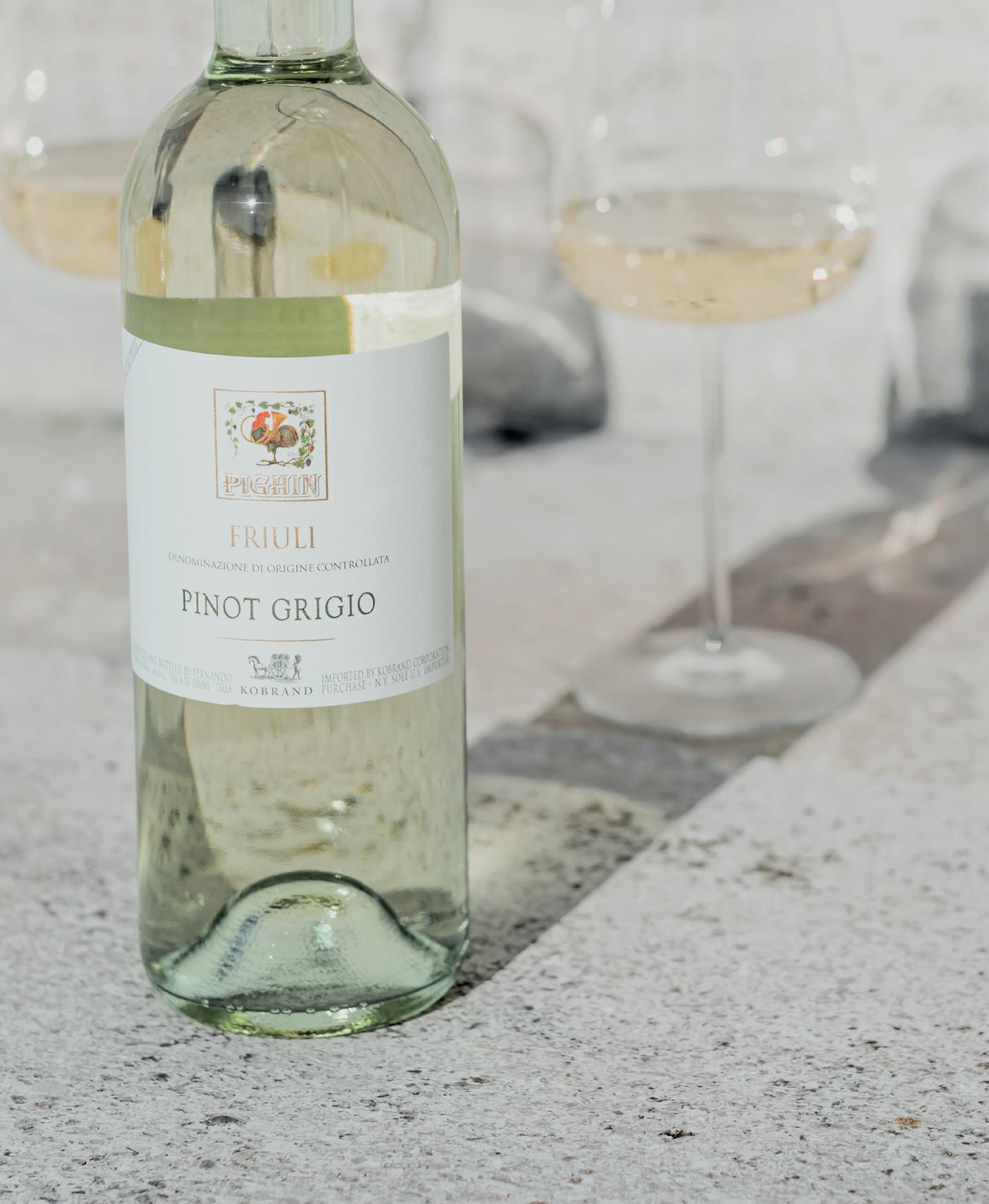
“A long story to discover sip by sip.”
A well-known bartender, journalist and TV celeb, Julian Biondi is also one of three partners in the urban distillery Fermenthinks. Their workshop produces artisanal liqueurs and London Dry-style gins. This is where many of the 'tailor-made' labels based on different territorial botanicals are created by entrepreneurs who want a gin that 'represents' them. "We are also able to work in small batches," says Julian, "to allow small businesses such as bars or restaurants to create their own line of liqueurs or craft spirits. The minimum production is 150 litres, which is the capacity of the still. Two thirds of our customers are from Tuscany, but we have made labels for companies in the Veneto, Piedmont, Sicily and Puglia. So: the producer is one, the brands are different. Behind each of these gins, however, there is only one production company: today, most of the new products placed on the market are the offspring of marketing
classic gives way to a new drink that has other characteristics and should have another name. So, I cannot say whether it is an evolution or a death: it is definitely a change.

Certainly it is a product that makes the bulk of the turnover, everywhere: you only have to look at a few bars and a few barmen at work to see this trend. It is a distillate that manages to meet the taste of most people: ladies drink it and gentlemen too. It has an exceptional ease of taste, it is loved by everyone. If we talk about Tequila, for example, we have to make cones with a much more difficult and particular taste. For Grappa even more so, although I manage to sell it well, even in blends and even proposing it to the ladies. But it is difficult for a customer to choose a Grappa-based drink at first glance. It is still seen as a boy's end of the meal. And it tastes difficult anyway.

And Vodka?
Vodka is also very simple, but it lacks those juniper-related nuances and aromas that make Gin intriguing and fascinating. Although there are some wonderful Vodkas, even with special and suggestive flavourings, this spirit has never had the success that Gin has. And then, of course, when a fashion starts to emerge, the world goes wild. And many companies have been very good at riding the trend, so the game is up.
Is only taste important when building the trend?
No, of course. Packaging and design have their importance. I'm thinking of Paolo Della Mora's Engine: it's an excellent product, with the right botanicals and organic and he also played a lot on the packaging with a can similar to those of motor oil. He put a lot of emphasis on marketing with an excellent product: a perfect move.
But why does Gin play such a status?
True, it gives status. It is no coincidence that a number of wine producers are also keen to have their own gin (and not all of them good!). In many restaurants, even starred ones, a Gin Tonic is often offered at the end of a meal: it is a question of trend, but it is also a question of a perfect encounter with the palate that closes in beauty, satisfied.
So does the Gin Tonic survive? Do we paraphrase the English Crown's exclamation into 'Gin is dead, long live Gin'?
The chefs and sommeliers I mentioned tend to be very, very careful in selecting great products, London Dry, and of high quality. I also do this in my restaurant. So there is a sort of mission to save precisely this great and very simple classic, fresh and aromatic, from death by too much choice and a flood of very dubious labels that are not very in keeping with the history of Gin.
ideas created by contractors often hundreds of kilometres away from the place whose territoriality is boasted on the label. There are also a number of gins distilled abroad which, however, explicitly communicate their Italian character: all of this confuses even more a consumer who is just approaching this world. To cite just one example, just look at Malfy (a gin with a sounding that recalls the most famous Coastline) and which is produced by a large multinational such as Pernod Ricard in a Piedmontese distillery!
So far, however, we have talked about distilleries and stills. That is to say, of 'quality' spirits and tradition that are the result of skilled craftsmanship. The EU Regulation 2019/787 on 'spirit drinks' also allows liquor obtained by the 'compound' method, i.e. without distillation and with. cold maceration of juniper and other botanicals or even just by mixing alcohol with essential oils and even adding
sugar, with the possibility of calling the product Dry Gin if the glucose concentration is less than 0.1 gram litre. These regulations, in a country that is still very young on the Gin front, risk creating confusion and plenty of it.

For example, what is the difference between London Dry Gin and Dry Gin perhaps preceded by Tuscan? Well, they are simply two absolutely different products in every way. London Dry Gin, in fact, is a method of production through distillation that must follow a very strict specification (juniper compulsory, methyl alcohol under 5 grams per hectolitre, no other elements allowed). Dry Gin is a product similar to a bitter or vermouth, obtained by infusion or blending. If I then put Tuscan in front of it, it gives the idea that it is a Gin linked to Tuscany, even though there is no obligation to certify the origin of the essences used. This has led to a huge increase in the number of liqueur factories, but not that of distilleries.
If a Tuscan Dry Gin can be produced in Veneto without a still, is it possible that at least for the botanicals there is no obligation of origin? Most gins that claim to be 'expression of terroir' do so from the selection of local herbs and spices that are used for their gin. But there is no obligation to specify how much Tuscan rosemary is used or how many Amalfi lemons! It is possible to claim to have used Amalfi lemons on the label even if you just add one per 1,000 litres of gin and rely on any low-cost product for the rest. And so, in the land of substance and quality, branding and marketing win out. But what is the point, at this point, of having to decide which of the hundreds of Gin labels I would like my Gin Tonic with? Not least because the risk today is that it confuses minds more than it saves them. So much for Churchill.


In Italy, sparkling wine production now knows no boundaries. The classic areas, which have always been dedicated to the creation of bubbles, have been joined by many experiments in every corner of the country. With Dubl, however, we are dealing with an entirely different story. In fact, it all began a good 20 years ago, when Feudi di San Gregorio presented its first Metodo Classico label made in Irpinia. We are in Campania, but the characteristics of this area are anything but Mediterranean: the high hills are often lashed by the

long, and to this is added a soil of volcanic matrix capable of giving a minerality found in few other areas. ‘There were all the conditions to try and produce a great Metodo Classico,’ says Antonio Capaldo, President of the Tenute Capaldo group of which the Dubl brand is now part. ‘The acidity,’ echoes Pierpaolo Sirch, who is in charge of the entire production cycle, ‘is the backbone of the wine, its perspective. The Irpinian grapes, in fact, are characterised by a pronounced
acidity and we have married this personality in our winemaking processes’. In order to achieve the goals the company was aiming for, none other than Anselme Selosse, one of the most noble and prestigious names in Champagne, was involved. He recalls: ‘We wanted to understand whether the process of sparkling wine could be just a set-up or a new perspective for the wines produced in Irpinia. The objective was not to create a copy of a Franciacorta, a Cava or a Champagne. Nor did we want to change the wine of Irpinia. The identity of
Champagne is not given by sparkling but, on the contrary, sparkling helps to express the identity of Champagne’. Anselme was struck by what Greco and Aglianico could offer a Metodo Classico: thus Dubl was born, ‘double’ to evoke the encounter between the great richness of the Irpinian varieties and the extraordinary tradition of the Metodo Classico.

Thus starting from an extremely suitable territory and a meticulous study conducted on native vines, the Dubl project has grown over the years to become an interweaving of worlds, hands, points of view. ‘In the Metodo Classico,’ explains Capaldo, ‘the man factor, the savoir faire, is essential. The territory always speaks through its vines, but in the sparkling process, man is called upon to make the difference with his own personality. For this, experience is fundamental: there are no shortcuts’. After 20 years of experimentation and market presence, Dubl raises the bar again by becoming an autonomous brand with respect to Feudi di San Gregorio. And it celebrates this new corporate vision with the launch of two new numbered Cuvées, the Dubl Brut Edition I and the Dubl Rosé Edition I, which flank the two Dosaggio Zero versions Dubl Esse and Dubl Esse Rosato . Returning to the two new labels, the Brut Edition I made its debut with a base made up largely of Greco (with a minimal presence of other Irpinian varieties) and an ageing on the lees of 42 months, while the Dubl Rosé Edition I will be the fruit of a cuvée made up largely of Aglianico with a very brief maceration on the skins and an ageing on the lees of 78 months. Over the years, Dubl has become a blank canvas to be filled with projects inspired by design and architecture; with the new line too, the company has decided not to fail in this mission. The label and the bottle are the fruit of the genius of designer Massimo Vignelli , who from the outset oversaw the visual identity of the brand, giving it a strong recognisability in the play of the two overlapping squares. The Dubl Esse line, where Esse stands for selection, zero dosage and vintage - with ageing on the lees for more than 60 months - was the brainchild of Antonio Capaldo: “To go further and begin to cross-reference the extensive knowledge of our territory with the experience gained in the cellar and find new nuances of elegance and ever greater precision of expression”. DUBL Edition could not have dreamt of a better start. The Brut Edition I won the gold medal at The Champagne & Sparkling Wine World Championships 2023, the world’s toughest and most prestigious sparkling wine competition, making it one of the best 170 spar kling wines in the world.

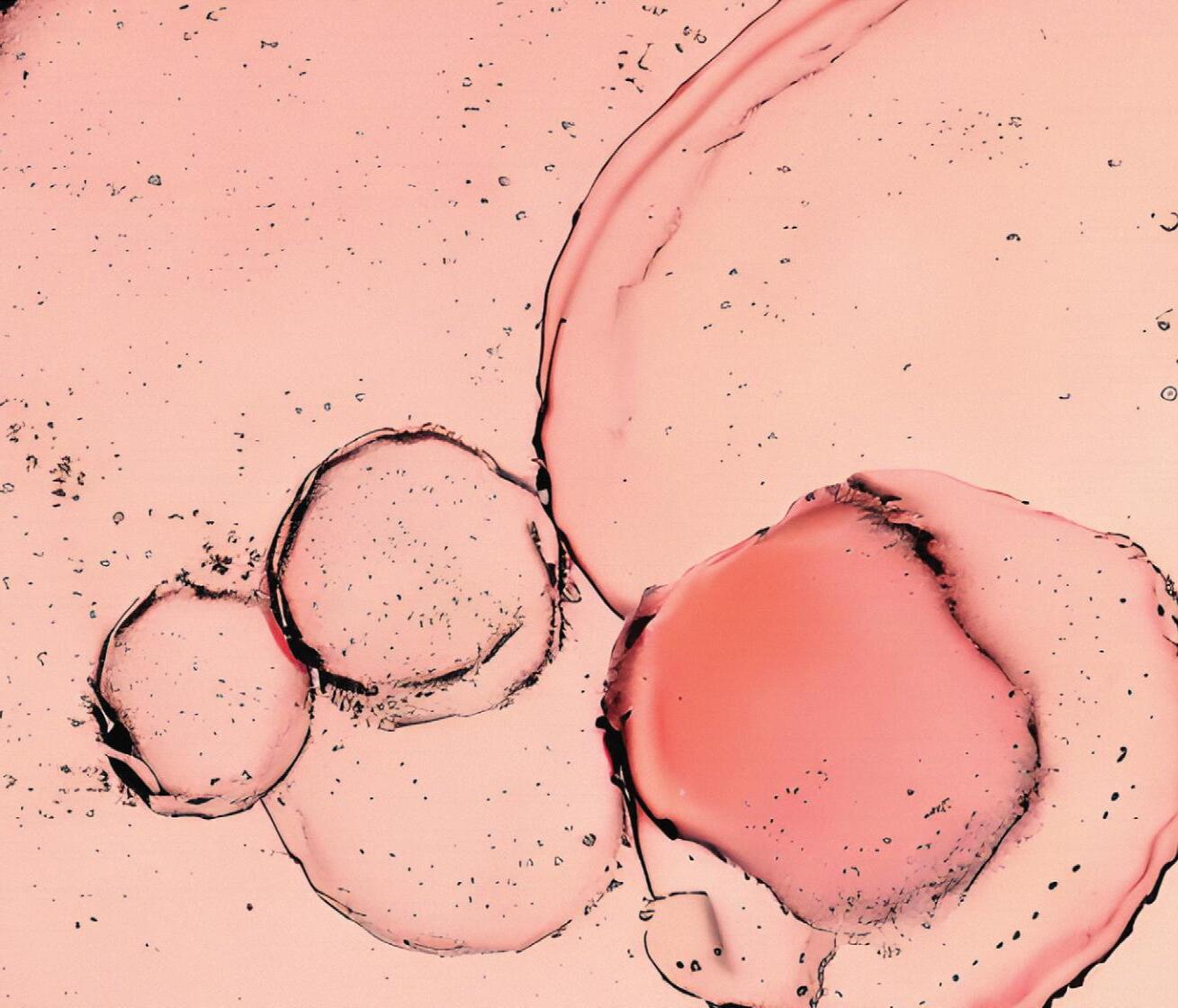
From Cloudy Bay to Clos Henri, a trip to New Zealand 50 years after the first harvest
 by Lorenzo Ruggeri
by Lorenzo Ruggeri
Acolourful exclamation escapes some: it really is a cork! For days, we have only encountered screw caps, on whites as well as on reds with a limp. We are in a winery in Marlborough, on New Zealand's South Island. To get there from Italy, the journey is quite comfortable: a stopover in Dubai, then a flight to Auckland; from here we board a twinengine plane, as spacious as an old Cinquecento, with destination Blenheim. After only 35 hours from departure we land in a plain of vineyards, surrounded by hills, the airport is no bigger than a tennis court. The town has 30,000 souls, exactly the same as the hectares under vine in the region, and at 9pm it seems to be curfew time. Marlborough Sauvignon put New Zealand on the world wine
map, the kick-off being in 1973 when Montana Estate (now Brancott) planted the first vines. Today, the variety covers 80 per cent of the region's production, so what's behind that lashing intensity that distinguishes its style? Certainly, Marlborough Sauvignon is either loved or hated, there is no inbetween. There are 150 producers, the first visit has a funky rhythm, from Framingham we are warmly welcomed amidst vinyls, drums, long beards and agronomists in garish socks. Andrew Brown is a winemaker with a penchant for surfing, we find his irony in the gadgets, from T-shirts to caps, in the rehearsal room, in the labels. He introduces us to the region, the valleys are named after rivers, we decided to focus on the Wairau Valley, characterised by very fertile and flat land, then there is the Awatere Val-
ley and the Southern Valleys. «There is no longer a single idea of Sauvignon, a less aromatic style is growing, many are trying spontaneous fermentations. I like mature Sauvignon, after 10-15 years.» Framingham has some of the oldest vineyards in the appellation, the AMP (Appellation Marlborough Wines) on the other hand was only established in '18. Among the wines tasted were Rieslings, including a surprising Trockenberenauslese, and Pinot Noir, the other two leading varieties in the area. Sheep play in the surrounding rows, and we will find them constantly in the vineyard. The second appointment is with The Whare Ra, the reality of Anna and Jason Flowerday, the translation in Maoi language is: The House in the Sun. The winery is little more than a cottage, with the garage converted into a winemaking centre.
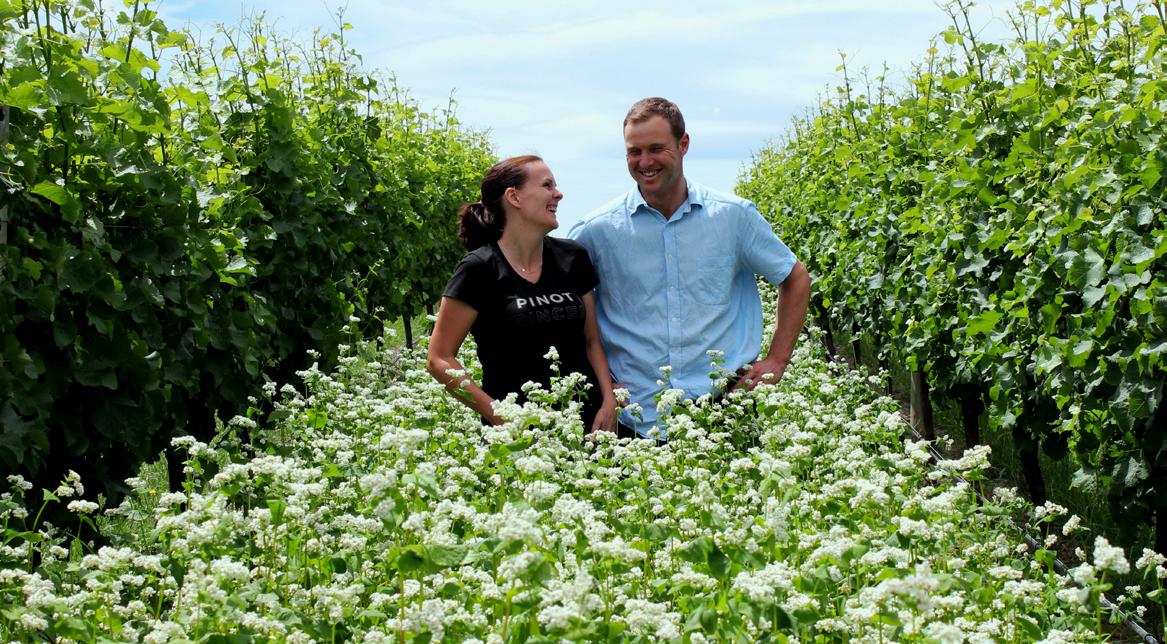
In the opening, Clos Henri.
It is the oldest of Marlborough's private wineries, established in 1979, true organic pioneers; the standard of the wines impresses us across the board for character. «The Wairau River is warmer, here the sauvignon tends to ripen earlier, with more pronounced tropical sensations, while in Awatere the grapes are picked a month later, cooler climate and citrus and floral traits. We have vineyards in both areas and we ripen 10 per cent of the mass in used wood,» Anna tells us. When she recognises our accent she thanks us: «You should know that the first to discover the potential of New Zealand wine was an Italian, Romeo Bragato (see box), his research was forgotten for years». We say goodbye and intermezzo with a hearty lunch at Harvest Restaurant, where we savour a sauté of Cloudy Bay Diamonds clams to die for: huge, firm, very tasty;

ROMEO BRAGATO, THE ITALIAN PIONEER OF NEW ZEALAND WINE
Who knows what Veneto oenologist Romeo Bragato was thinking on his long journeys to New Zealand. In 1895, strong from his experience at the prestigious Scuola Enologica di Conegliano (Conegliano School of Oenology), he was hired by the New Zealand Department of Agriculture to assess the viticultural vocation of the still little-explored land and for the first wine-making trials. Bragato was first an advisor to the Victorian government, developing a fundamental report for the creation of modern viticulture (Prospects of Viticulture in New Zealand), from 1902 he settled permanently. For seven years he was Governor of the Department of Viticulture until 1909, when he left the country. He was the first to identify the most suitable grape varieties for the individual areas, imported phylloxera-resistant rootstocks and started the first experimental winemaking. A true visionary who understood the oenological potential of these lands. The Bragato Research Institute in Blenheim, a modern glass and steel building, is named after him.
Clos Henri –
Renwick - 639 State Highway 63+64 3 572 7923 – www.closhenri.com
Cloudy Bay
Rapaura - 230 Jacksons Road+64 3 520 9147 - www.cloudybay.com
Dog Point
Blenheim - 797 New Renwick Road+64 3 572 8294 - dogpoint.co.nz
Framingham
Renwick - 19 Conders Bend Road+64 3 572 8884 - framingham.co.nz
Greywacke - Hawkesbury, Omaka Valley - 47 Kennedys Road - +64 3 572 5425greywacke.com
No. 1 Famuly Estate – Blenheim – 169 Rapaura Road - +64 3 572 9876
Spy Valley – Blenheim -37 Lake Timara Road West - +64 3 572 6088 – s pyvalleywine.co.nz

Te Whare Ra – Renwick - 56 Anglesea Street - +64 3 572 8581 - www.twrwines.co.nz
Two Rivers - Springlands, Blenheim- PO Box 5180 - www.tworivers.co.nz
Frank’s Oyster Bar & Eatery
Blenheim - 28 Scott Street - +64 3 579 1778eatatfranks.co.nz
Scotch Wine Bar & Wine Shop – Blenheim - 26 Maxwell Road - +64 3 579 1176 - scotchbar. co.nz
Harvest Restaurant – Rapaura - 776 Rapaura Road - +64 (03) 570 5700harvestrestaurant.co.nz
Wairau River Wines Restaurant –Renwick - 1 Rapaura Road - +64 3 572 9800wairauriverwines.com
Arbour Restaurant - Fairhall - 36 Godfrey Road - +64 3 572 9800 - arbour.co.nz
the other speciality is lamb shoulder, which here tastes decidedly less wild and sweeter than in Italy. We are ready for the most awaited visit, Cloudy Bay, the country's most famous wine brand. The name is that of the bay, discovered by navigator James Cook in 1770, on a cloudy day. The start is not the best, right in front of the entrance to the well-equipped facility, owned by the French LVMH group, there is a vineyard that has probably been weeded with napalm: more like the effect of a bomb than a treatment. There are also a couple of vines sheared off badly. We ask about it, but receive half-answers and silences, with promises of organic turns in the future. Not exactly the best in front of a group of curious journalists. The wines do not impress us, starting with a Chardonnay: «The wood is there, but it is practically imper-
ceptible», according to our guide. In the glass we have oak with a few traces of wine. The Sauvignon, on the other hand, has a brazen intensity, what does it come from? «It depends on how we work the vineyards, the soils, the maritime climate and the fierce temperature swings,» they reply. For us, there is also a shrewd use of pastry, among other things, the mouthfeel is not accompanied by as much juice and flavour. We appreciate, however, the Pinot Noir from the most recent acquisition in Central Otago, with good depth and complexity of flavour. The next morning we are at Dog Point, founded by Ivan Sutherland, Cloudy Bay's wine director from 1985 to '03. With its 340 hectares it is the largest organic estate in Marlborough, we are in Renwick. The level of the four wines produced is very high, and with winemaker
Murray Cook we tackle many issues head-on, starting with screwcap. «Sauvignon is very sensitive to oxidation, the net change came between '00 and '02 when a lack of product and some bad batches convinced producers to switch to screwcap en masse. The unpredictability from bottle to bottle is not so much the magic of the wine, but a problem of the cork: » Bottles are more consistent and age more gradually, in New Zealand or Australia it is normal to have them on $800 bottles. All four wines produced are impeccable in style, definition and sense of proportion. The organic figure in Marlborough is quite low, around 5%, we ask Murray how the sustainable certification we see on almost all back labels is achieved. «It is a standard that combines environmental, social and economic concerns but it is rather easily obtained by answering a questionnaire.

We would need tighter stakes, as a company we are much more restrictive. You have to travel to understand how restrictive our certifications are.» We thank Murray for an excellent tasting, and for his clarity, and take a walk on the ocean to clear our minds. On our last visit, we find ourselves tasting in a church, with oenologist Damien Yvon, director of Clos Henri, as the priest. The estate is the investment of the Bourgeois family, a big name in Sancerre; here they wanted to bring back a French style while enhancing territorial peculiarities. «At 50, Marlborough is going through a classic mid-life crisis, we are asking questions. There is an incredible energy in this part of the world, everything is changing much faster, but we need to improve, exploiting the subzones more. Stylistically, the wines are getting finer and lighter'. The problem

The Marlborough Boutique Hotel
B Rapaura, Blenheim - 776 Rapaura Road+64 (03) 570 5700 - themarlborough.co.nz
The Sounds Retreat Luxury LodgeRiverlands - 81 Cob Cottage Roadthesoundsretreat.co.nz
Vintners Retreat – Renwick - 55 Rapaura Road - +64 3 572 7420 - vintnersretreat.co.nz

Hotel d’Urville - Blenheim Central, Blenheim - 52 Queen Street – +64 (0)3 577 9945 - hoteldurville.com
Antares Homestay - Blenheim, Rapaura106 Jeffries Road - 03 572 5495antareshomestay.co.nz
Ocean View B & B – Blenheim - 35 Edgewater Place - +353 87 847 0316 - ocean-view.hotelbx.com
Marlborough Wine Barrel Cabins –Hawkesbury - 540 Brookby Road - +64 22 048 0372 - sleepingbarrels.co.nz
Chateau Marlborough - Blenheim
Central, Blenheim - 95-117 High Street - + 64 (0)3 578 0064 - marlboroughnz.co.nz
Harbour View Motel - Picton - 30 Waikawa Road - +64 3 573 6259harbourviewpicton.co.nz
with these lands, he adds, is the very high fertility, if fertilisers are added it is easy to have very high yields and lots of fruit. In his bottles we find the good old cork, a Diam: «It gives us a more harmonious evolution. The ideal would be to evaluate the closure in each vintage according to the wine, but it is economically difficult». The different single vineyards produced are named after the ice ages that shaped the terroir. The peak is on the Waimaunga '20 Pinot Noir: sublime quality tannins, French sensibilities and typical Marlborough freshness. For our last dinner we dribble Rocco's,
a dreaded Italian restaurant infamous for its mafia-style chicken, and settle in at Frank's, an osyter bar that makes the most of the local catch. Among the patrons we also happen to meet the owner of the Greywacke winery and taste another dozen wines. The stylistic boundary between New World and Old Europe is becoming increasingly blurred, but the real discriminator is between large (see Oyster Bay Wines) and small wineries. We carry the division with us wherever we go. We take the road home ever more convinced of the goodness of the screwcap.
In Valdobbiadene, ancient clones of Glera, Bianchetta, Perera and Verdiso recovered and planted in rows in the vineyard around Tenuta Pradase; a vineyard that Valdo regards as a “varietal library” full of knowledge and cultural heritage.




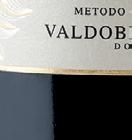





















In the traditional method, resting at least 24 months on the lees in the bottle, this is a Valdobbiadene DOCG that, just like a book, preserves and passes on a story that challenges time, harvest after harvest.



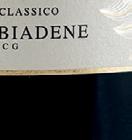
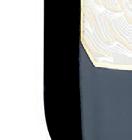



















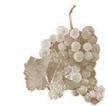
Greywacke
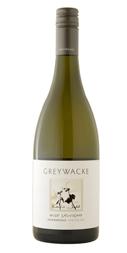
Freshness and vitality of taste. It is crisp and very fragrant on tones of mint, basil and lemongrass, with a touch of ginger and a very pleasant yeasty note. The palate has a classy, vibrant progression but is at the same time full and juicy, creamy and with a pronounced minerality. Dry and zesty: what a sip!
Dog Point
The fruit of seven vineyards in the Wairau Valley, a small part ferments spontaneously, the wine matures for about 4 months in stainless steel. A classic stamp of tomato leaf, basil and white peach, intense but never pungent. The palate is harmonious, driven by citrus notes and a relaxed finish of white pepper and mint. Nice sense of proportion
Section 94 ’17
Dog Point
A plot planted in 1992, close to the winery, spontaneous fermentation and ageing in used French barriques. The nose is slow and somewhat closed between tones of hazelnut, jasmin tea and straw. The tactile side of the wine is striking, velvety, managing to be both fat and dynamic at the same time, for an impactful sip, more broad than vertical. Calls for white meats or elaborate fish soups.
The Whare Ra
The whole battery impressed us with its pleasantness and originality. The Sauvignon '22 is the fruit of vineyards in the two best-known subzones, Renwick in the Wairau River and the upper Awatere area. A sprightly start of elderflower, gooseberry and lychee; it stretches well, intensely aromatic, but without excess, for a pure and vibrant finish..
Spy Valley
This Sauvignon produced in the Waihopai Valley is convincing. Aromatic traits of aniseed, elderflower and white melon, the vegetal profile is harmoniously declined, the taste is juicy and balsamic. In the finish it sprints between wild asparagus and green pepper, with good taste continuity.






Saint
Two Rivers
Precious single vineyard from the Southern Valleys. Spontaneous fermentation, vinified in cement, then terracotta amphora and further resting in the bottle. The nose is multifaceted, finely aromatic of anise, thyme and white asparagus. The palate is airy, fine and creamy, with structure and a long, harmonious finish. 2,000 bottles produced.
Clos Henri
The last Otira ice age shaped the territory of the Glacial River Stones. The style has a distinctly French modulation, and it could not be otherwise. The aromas are less shouty, revolving around tones of anise, elderflower and grapefruit; on the palate it relaxes well, in a crescendo of balsamic and vegetal sensations.
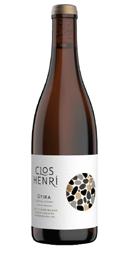
Cloudy Bay
The world's best known New Zealand Sauvignon Blanc opens with an unnatural intensity, with very fresh aromas of elderflower, kiwi and tomato leaf. The palate is very green, marked by acidity and a tropical, guava and more elderberry finish. Starts strong, closes in retreat. 2.4 million bottles produced.



Single Vineyard 5096, a parcel planted among the hillside vineyards in 1991, particularly rich in clay. It struck us for its character and depth, the aromas are dark, of spices and currants; the mouth is severe, energetic and compact, with a dense and articulated tannic texture, rich in cues with a long and sustained finish. Excellent evolutionary potential, 1,400 bottles.
A bright and fragrant style, light colour and floral character, of violets, then cherries and a fresh balsamic undertone. On the palate it is crisp, like a pomegranate kernel, with a pronounced, well-integrated acidity. 30% stalkiness gives a slight herbaceous sensation, for a nice personality angle. Hillside vineyards, between Settlement and Yarrum, some planted as early as 1983. Venison tartare or roast porcini mushrooms.
Clos Henri
The 2020 is a vintage very much in our wheelhouse at Marlborough. French touch and New Zealand personality, the tannic structure is the finest and most tailored of the tour. It is fine on notes of violets and small red fruits, with a sinuous progression: it is silky and continuous, more about embroidery than power. Gently spicy finish.
Two Rivers
The Brookby vineyard is in the Southern Valleys: organic growing, 20 years old, in Europe that would be a few, here the opposite. Very off colour, initial volatility and slight CO2, but the music changes quickly. It opens distinctly floral, then orange peel and raspberry; mouthfeel pleasantly rustic, light and authentic. It stretches out among blackberry brambles and strawberries, crisp and very drinkable.
In the wake of the single vineyard clayvin (one of the two vineyards that give life to this red) but in a lighter, more fragrant register. Tones of violet, orange peel and eucalyptus anticipate a very pleasant, elegant, fine mouthfeel, rich in small red fruits and drive. Balance between the parts and complexity: it sings in the glass.


In the northern part of the Wairau Valley, the soils are particularly rich in clay and the wines are on average more structured. This is the case with this selection, which captivates with notes of medicinal herbs and eucalyptus. The partial whole bunch vinification gives an ethereal mouthfeel, with a whiff of CO2 to give rhythm, combined with a severe earthy character. Remarkable ageing potential.
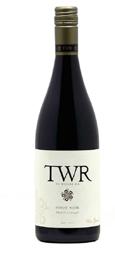
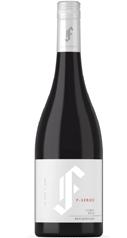

Panzano in Chianti is undoubtedly one of the capitals of Chianti Classico, a denomination that never ceases to amaze and that year after year increases its prestige on markets all over the world. This fact does not escape the critics, but neither does the entrepreneurs who decide to invest in the wine of one of the most fascinating Italian wine territories. This is what happened to Philippe Austruy, a French tycoon in the healthcare sector and owner of several wine estates between France and Portugal. ‘He was the one who entrusted me with the management of Tenuta Casenuove,’ says Alessandro Fonseca, director of the winery, ‘He has always been a great wine lover. And so he decided to realise his passion by becoming a producer’. Here are the stages: the purchase of La Commanderie de Peyrassol, a historic winery in Provence, in the south of France, dates back to 2001; a few years later, in 2012, it was the turn of Chateau Malecasse, in the upper Médoc, followed by the first purchase outside the French borders: in the Douro, a famous Portuguese wine region, he acquired Quinta do Corte in 2013. ‘There were some convergences to arrive at Tenuta Casenuove,’ explains Alessandro. ‘Philippe
has always been passionate about wine and this led him to invest first in the south of France, in Provence; then in Bordeaux and Portugal. He wanted to conclude this cycle with an Italian estate; he chose Tuscany obviously for the wine prestige of the region, but not only: there was a confluence, because Tuscany was the place of his summer holidays with his parents. There was an emotional bond with this land’.
News of Tenuta Casenuove dates back to 1608: at that time it was part of a monastery of cloistered nuns in Florence. And so it was until about 1830. Then there were several changes of ownership until 1954, when it was acquired by a Florentine family that turned it into a winery. Vineyards were planted there, over 30 hectares, and immediately the company experienced great success. Then, following a slow decline, the old estate decided to sell to Austruy, who, as in the other estates, decided to restore the existing structures without disrupting their relationship with the surrounding landscape. “Panzano is a special area of Chianti Classico; we are located in the western quadrant of the Uga. We have about 30 hectares of vineyards, which are part
of an estate of over 130 hectares in total, occupied by woods, olive groves and arable land. The altitude ranges from 370 to 500 metres; the soils are of various matrices and belong to the four main groups of Chianti Classico soils: calcareous marine deposits, more or less rich in skeleton; brown clays, which constitute a sort of water reservoir; and then the galestro, both grey, clayey, and red, rich in manganese. On the estate, Sangiovese is, of course, mainly cultivated, together with Merlot and Cabernet Sauvignon, already present on the estate from the previous management. With the replantings we have also focused on small quantities of other indigenous varieties, such as canaiolo, malvasia nera, ciliegiolo, colorino, and cabernet franc. A few years ago we started converting to organic farming and today the company is certified.



The production of Tenute Casenuove, focuses, of course, on Chianti Classico, of which the Gran Selezione represents the qualitative apex. The first vintage of Tenuta Casenuove’s Gran Selezione dates back to 2018. ‘Flanking me in the management of the winery are two young professionals,’ Alessandro Fonseca tells us. ‘They are Cosimo Casini, technical director, and Maria Sole Zoli, cellar manager. With them, from the very beginning we identified the rows with the best exposures to carry out parcellular harvests. There are three vineyards, right at the highest point of the ridge, from which we get the grapes for the Gran Selezione’. 2018 was a phenologically rather long year: the spring was rainy, with the risk that the vines could be attacked by phytosanitary problems. But a warm August and a stable, windy September brought the situation under control. The harvest ended around the second week of October. “In 2018, we opened part of the new winery by renovating old buildings, without adding any volume. It was therefore the first vintage processed in the new cellar where we have unglazed concrete tanks in which we carry out fermentation and maceration.” The wine for the Gran Selezione ages for 20 months in Slavonian oak barrels and then ages in the bottle for about three years. The result is a wine with a deep, brilliant colour, whose aromatic range offers floral nuances of violets, fruity nuances of berries and cherries, and spicy nuances reminiscent of tobacco leaf and vanilla. Taut, elegant, harmonious on the palate, it reveals a seductive and refined tannic texture. Time is its best ally.

In December 2023, his restaurant in the Porta Nuova area will celebrate ten years in business. A milestone that promises to be a further stepping stone. Andrea Berton, one of the most talented among the Marchesi Boys (the chefs who grew up at the school of the father of the new Italian cuisine, ed), who has passed through places and people that have made history such as the Enoteca Pinchiorri in Florence and Alain Ducasse's Louis XV in Monte Carlo, is enriching his proposal. Alongside Non solo brodo (the now signature menu of the house, punctuated by preparations that mix solid and liquid parts) and Porta Nuova, where classics and new proposals alternate, comes Natura, a vegetable menu that fits in with the current trend, but with a style all its own. The style of a cuisine that has always been very clear-cut, clean-cut, aiming at the essence of taste, at immediacy already at sight. Essentiality and 'rigour' that transpire right from the names of the dishes, linear and direct. A new challenge that closes with a homage to the master Marchesi. A declaration of intent.

Cucumber and kiwi
Grilled salad, rocket pesto and misticanza Planet Farms
Grana Padano Riserva broth
Warm minestrone with legumes, vegetables and candied onion
Hay and mascarpone risotto or
Spaghetti, red sauce and Grana Padano Riserva
Round courgette in salt crust and vegetable ratatouille
Cardoncello mushrooms and crusco pepper
Passion fruit and vanilla
Gold and saffron puffed rice - Homage to Gualtiero Marchesi
WHERE RISTORANTE BERTON

Milano via Mike Bongiorno, 13 02 67075801 ristoranteberton.com
GUIDE SCORE 2023
Total 91
TASTINGMENU PRICE
€ 150 excluding wines
by Laura Mantovano – photo by Marco Scarpa photo byi Sandro MichahellesThe protagonist is the escarole which, after being blanched in water and salt and immediately placed in water and ice so as not to lose its crunchiness, is 'shaped' into a roll and enclosed in a film. Medallions are then cut out and grilled with a brush of oil, salt and pepper. Each medallion through a hole in the centre is then stuffed with a peanut cream. The escarole medallion is placed on a mixture of three sauces made with red misticanza, rocket and green misticanza. Final touch given to slices of raw radishes dressed with oil, salt pepper and grated lemon peel, misticanza leaves, toasted pine nuts and caper flowers. Call it a salad if you like.

iEasier than that. Only apparently. That red is not tomato red but watermelon red. The recipe starts with the watermelon pulp which, after being dehydrated for 20 hours at 70°, is cooked in a frying pan with extra virgin olive oil, thin slices of onion all strictly equal, fresh basil, salt and pepper. It is stewed for 10 minutes until the sauce effect is achieved. Cook the spaghetti, drain when al dente and sauté in a pan with centrifuged watermelon water, extra virgin olive oil and freshly grated Grana Padano cheese. Serve: red sauce in the centre, spaghetti as a frame, thin slices of Grana Padano Riserva and dwarf basil leaves to complete the dish. A perfectly successful divertissement.


'endowed with a piquancy that I would describe as elegant', emphasises the chef. The mushrooms are first lightly braised with oil, thyme, water and poached garlic, then cut in half and grilled. They are served with a cream of crusco pepper and a cardoncello mushroom reduction made from mushroom waste and broth. The final touch is provided by small fried crusco pepper leaves and nasturtium leaf, which gives a light spicy and iodised note

Where nature, sustainability, art and hospitality are inextricably linked. A small paradise, an authentic place in Torgiano, in the green heart of Italy, Umbria.

 TORGIANO ORGANIC WINE
TORGIANO ORGANIC WINE
Andrea Berton finds it hard to remember how many risottos with gold leaf (Marchesi's celebrated dish born in 1981) he prepared in the eight years at the master's side. But that iconic dish left its mark and forty-two years later he has decided to pay him a 'sweet' homage. Risotto becomes dessert. A saffron meringue, covered with a glaze made of cocoa butter, white chocolate, saffron and puffed rice, encloses a citrus gel, milk rice and finally saffron ice cream. You sink your spoon in and a mix of flavours is released. Creamy, mouth-watering, 'precious'.

GAMBERO ROSSO
www.gamberorosso.it
DIRECTOR
Marco Mensurati
SENIOR EDITOR
Lorenzo Ruggeri
PHOTO EDITOR

Rossella Fantina
LAYOUT
Chiara Buosi, Maria Victoria Santiago
TRANSLATION
Eleonora Baldwin
CONTRIBUTORS
Gianluca Atzeni, Michela Becchi, Federico Bellanca, Andrea Boatta, Indra Galbo, Laura Mantovano, Paola Mencarelli, Loredana Sottile
PHOTOGRAPHS AND DRAWINGS
Alessandro Micarelli, Marco Scarpa
Advertising
Class Pubblicità SpA
Milano, Via Marco Burigozzo, 5 - tel. 02 58219522 For commercial enquiries: kanchieri@class.it
Gambero Rosso and
are registered trademarks belonging to Gambero Rosso S.p.A.
GAMBERO ROSSO is a Registered Trademark used under license by GR USA CORP
Copyright by GAMBERO ROSSO S.P.A. 2023. All rights reserved. Nothing may be reprinted in whole or in part without written permission from the publisher. GR USA CORP is not responsible for loss, damage, or any other injury as to unsolicited manuscripts, unsolicited artwork or any other unsolicited materials. september-october 2023
a www.gamberorossointernational.com ✉ international@gamberorosso.it f GamberoRossoInternational